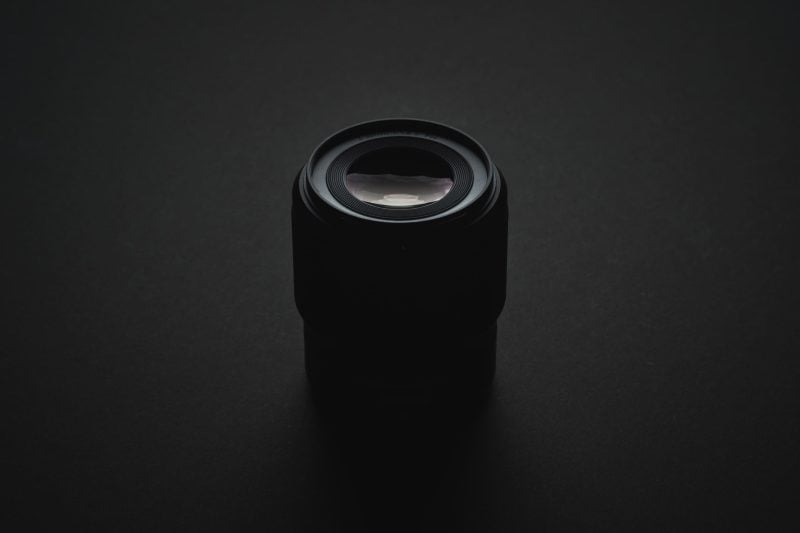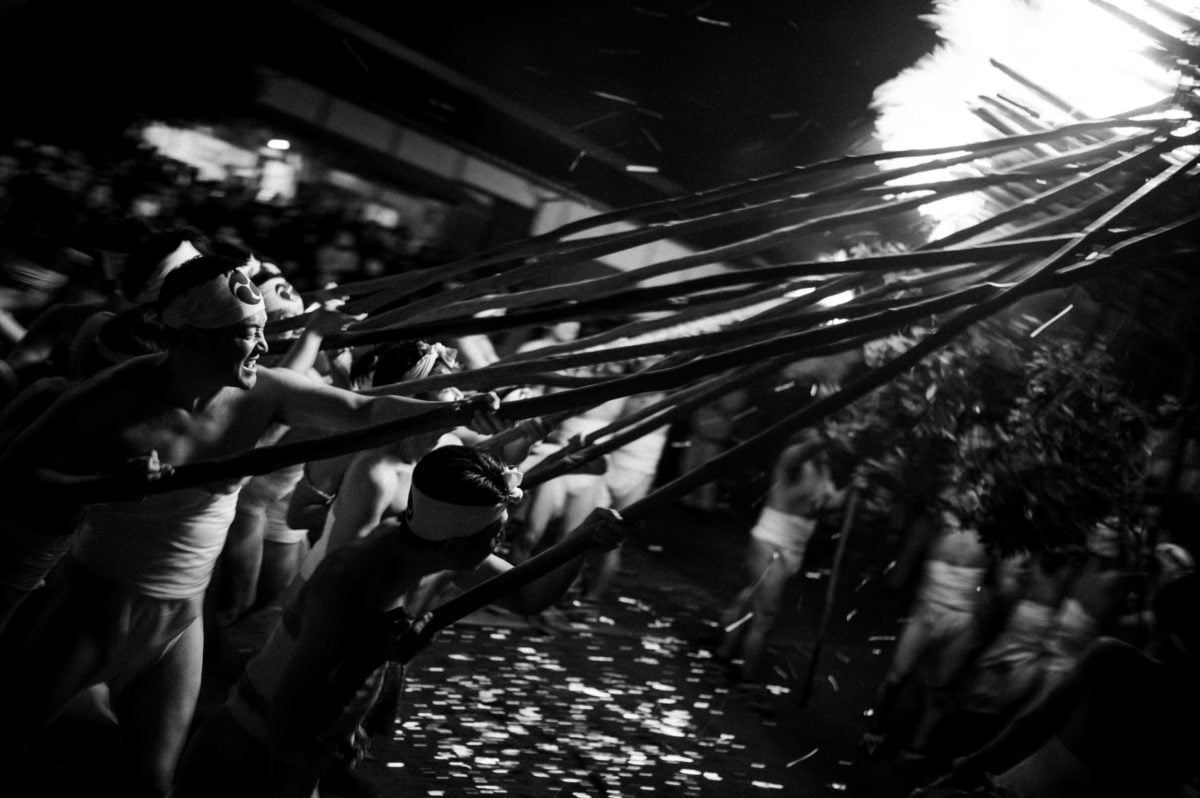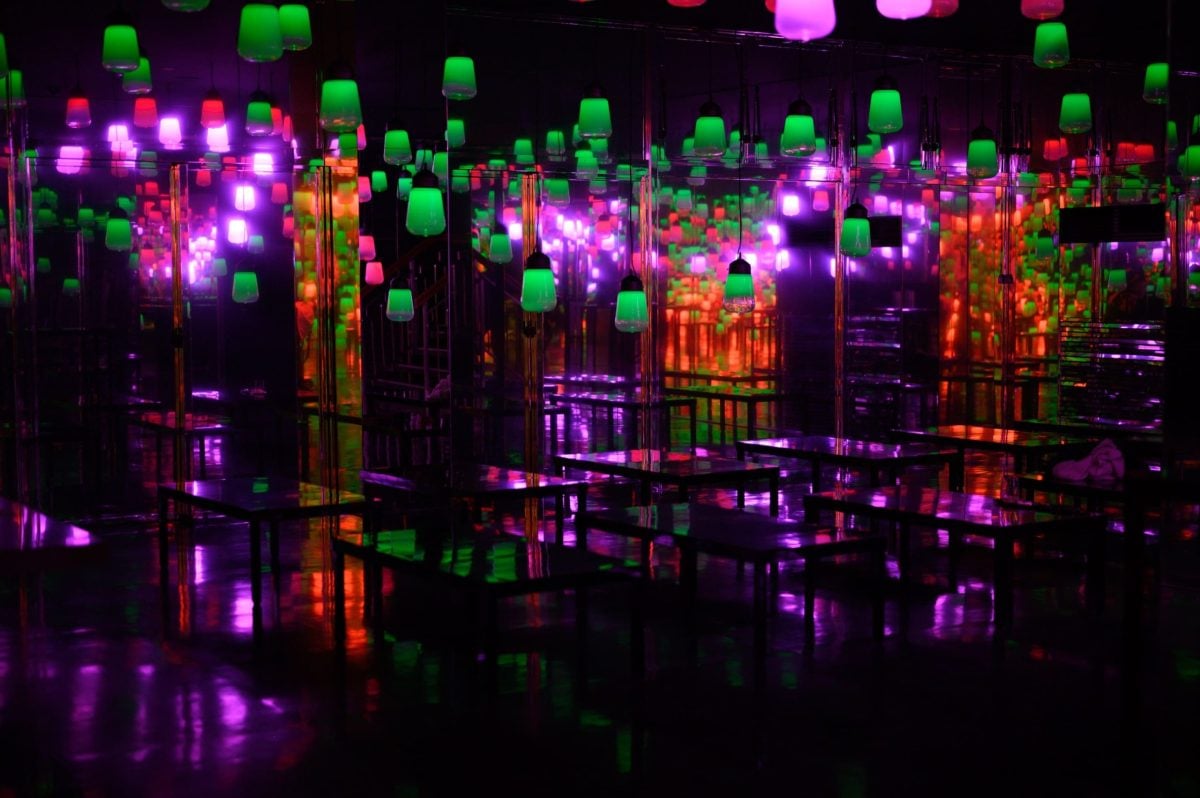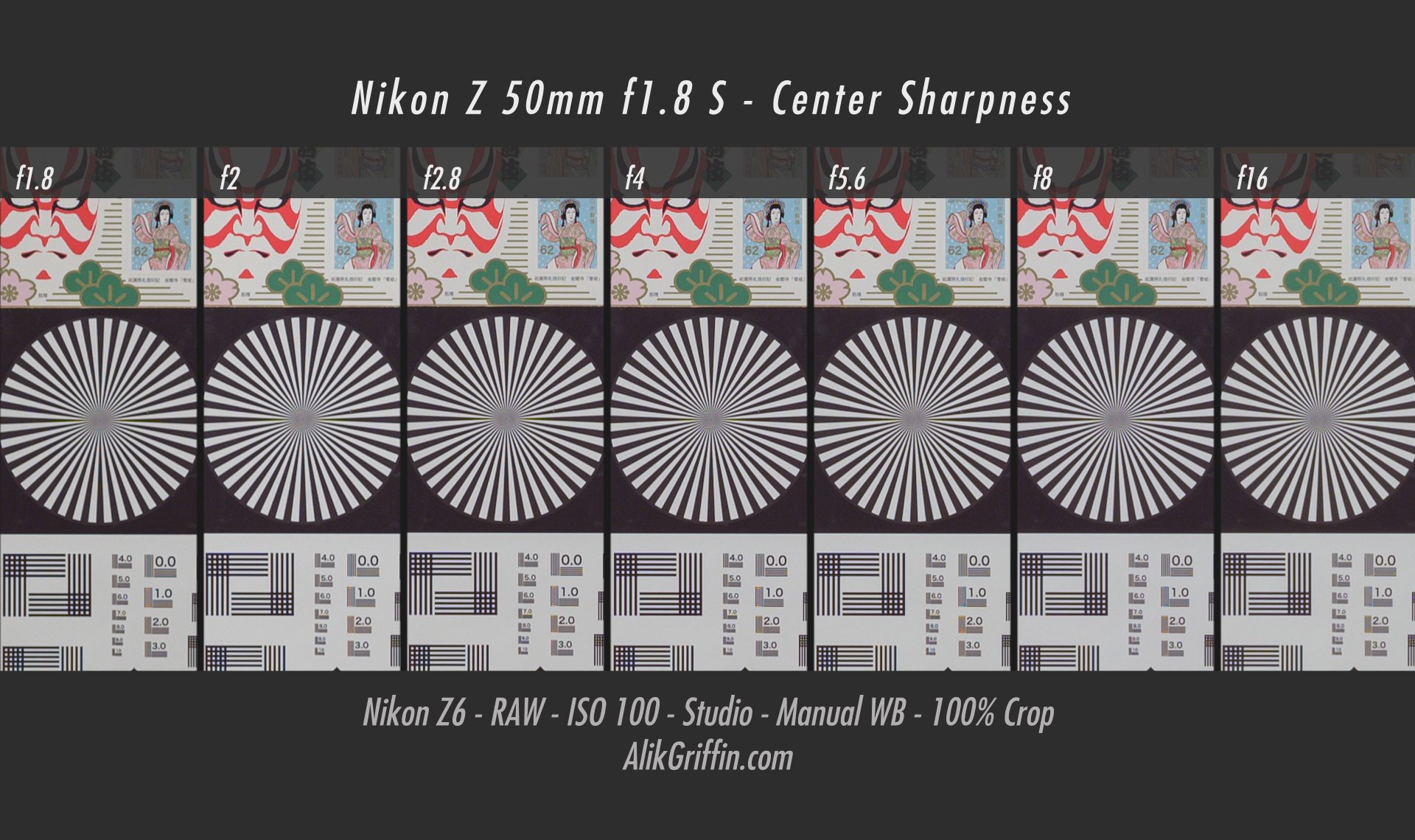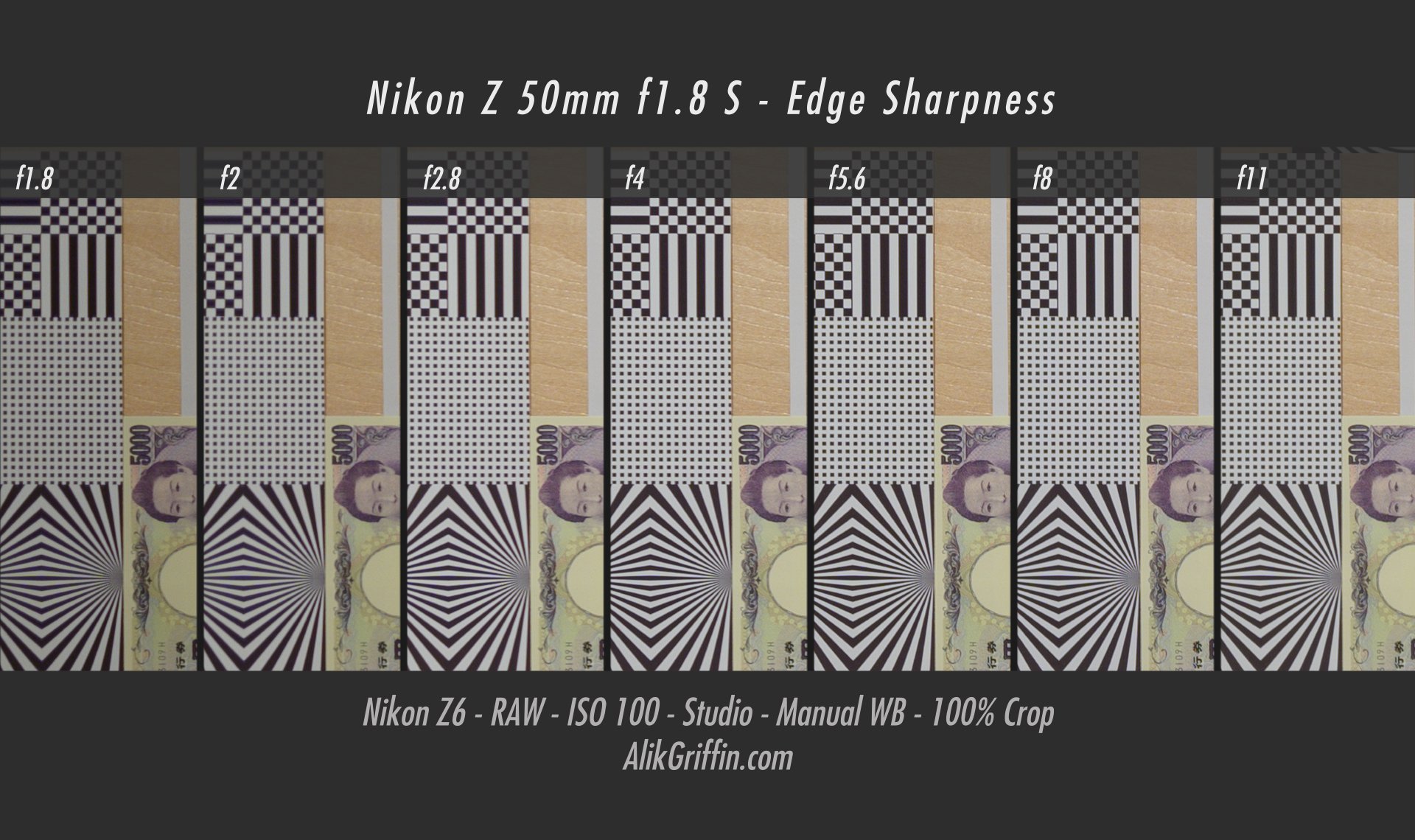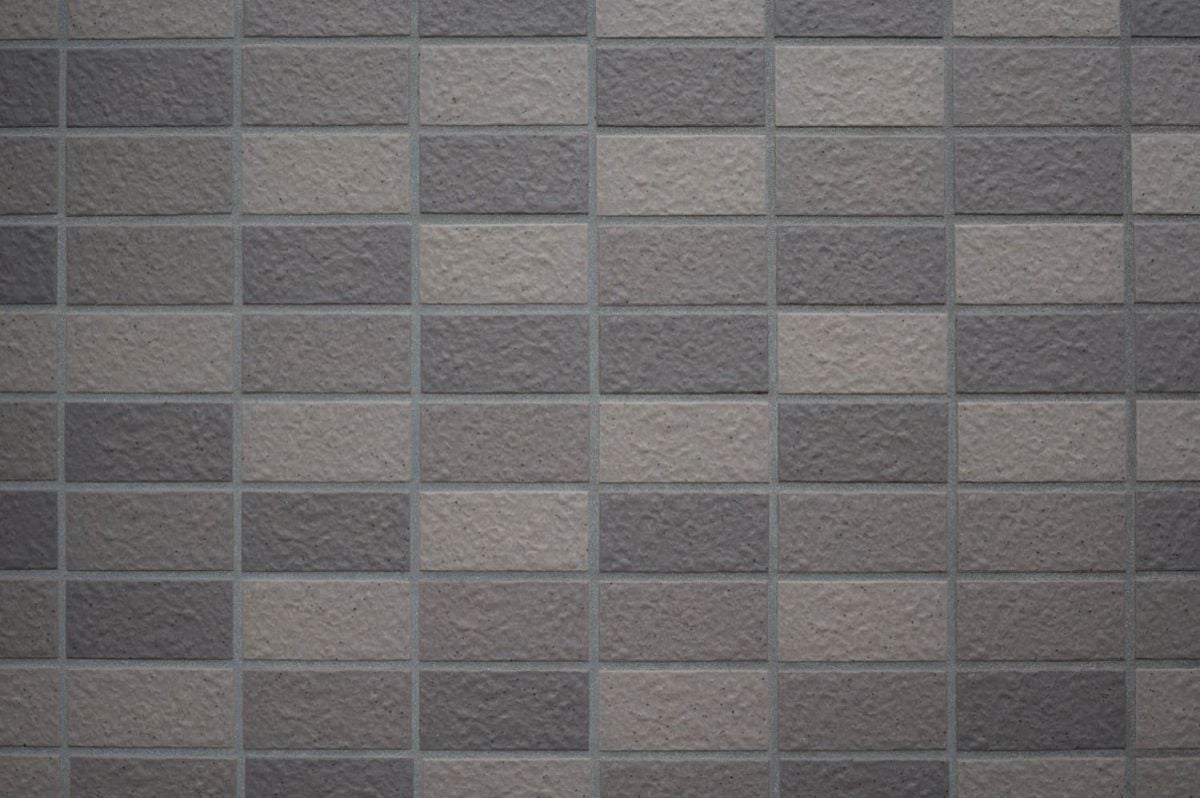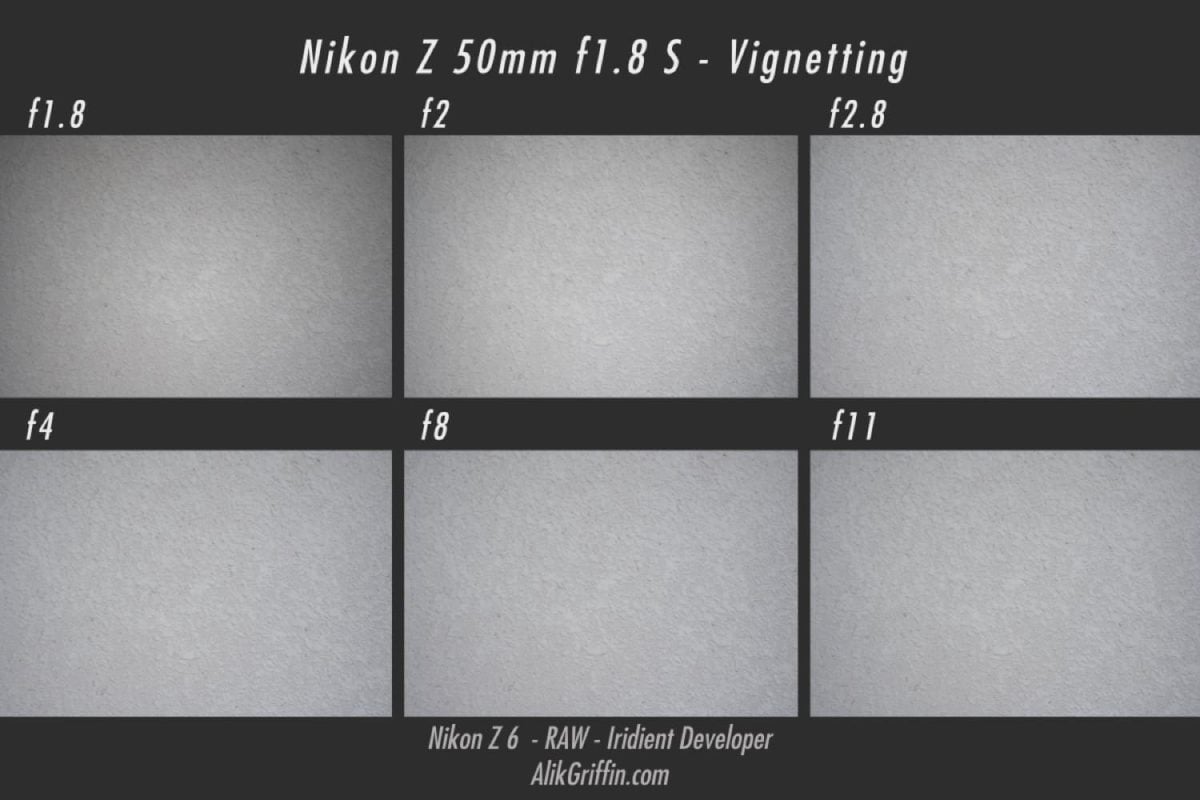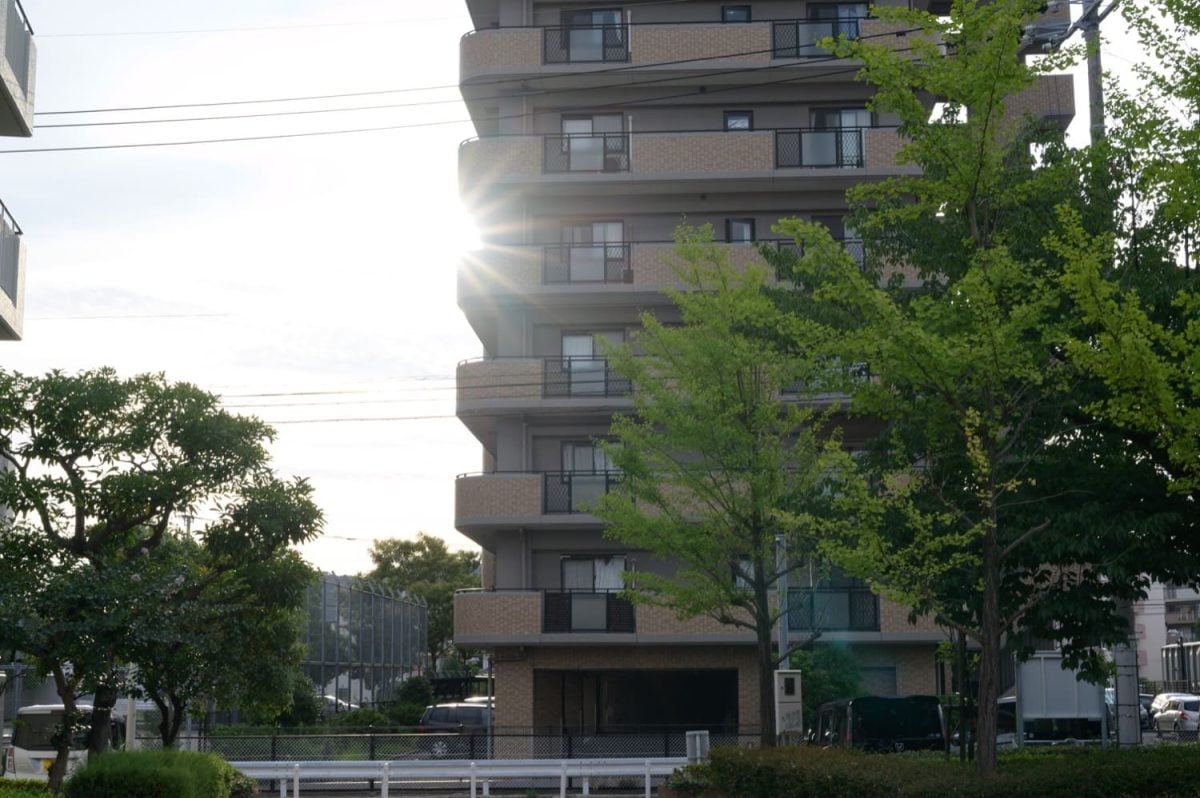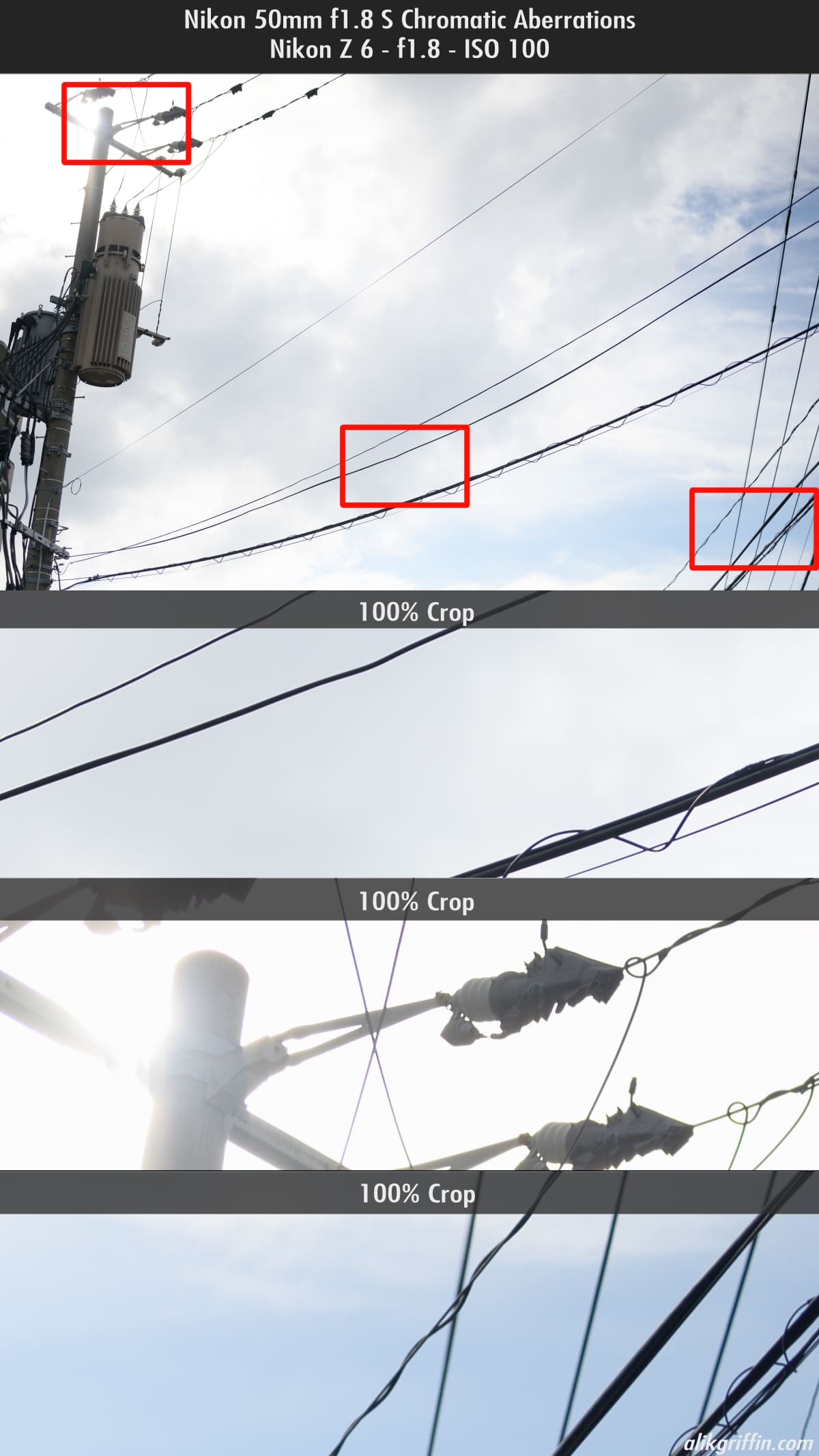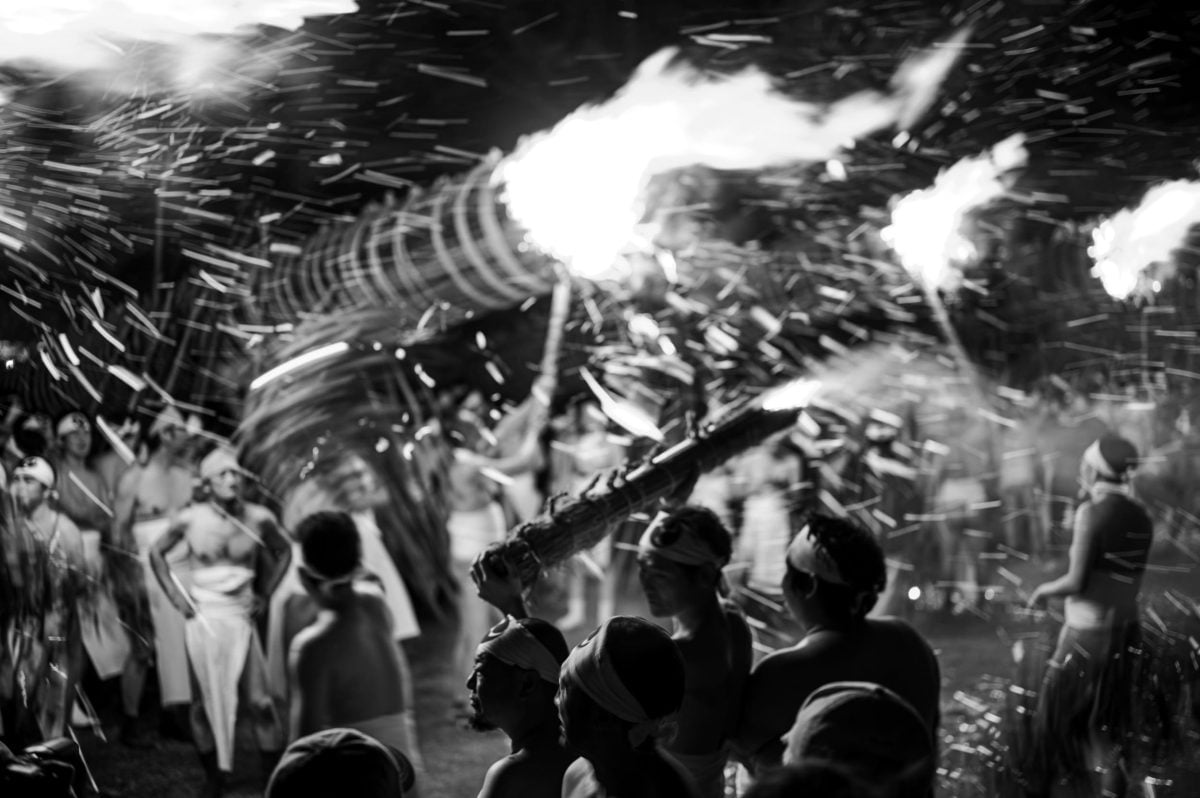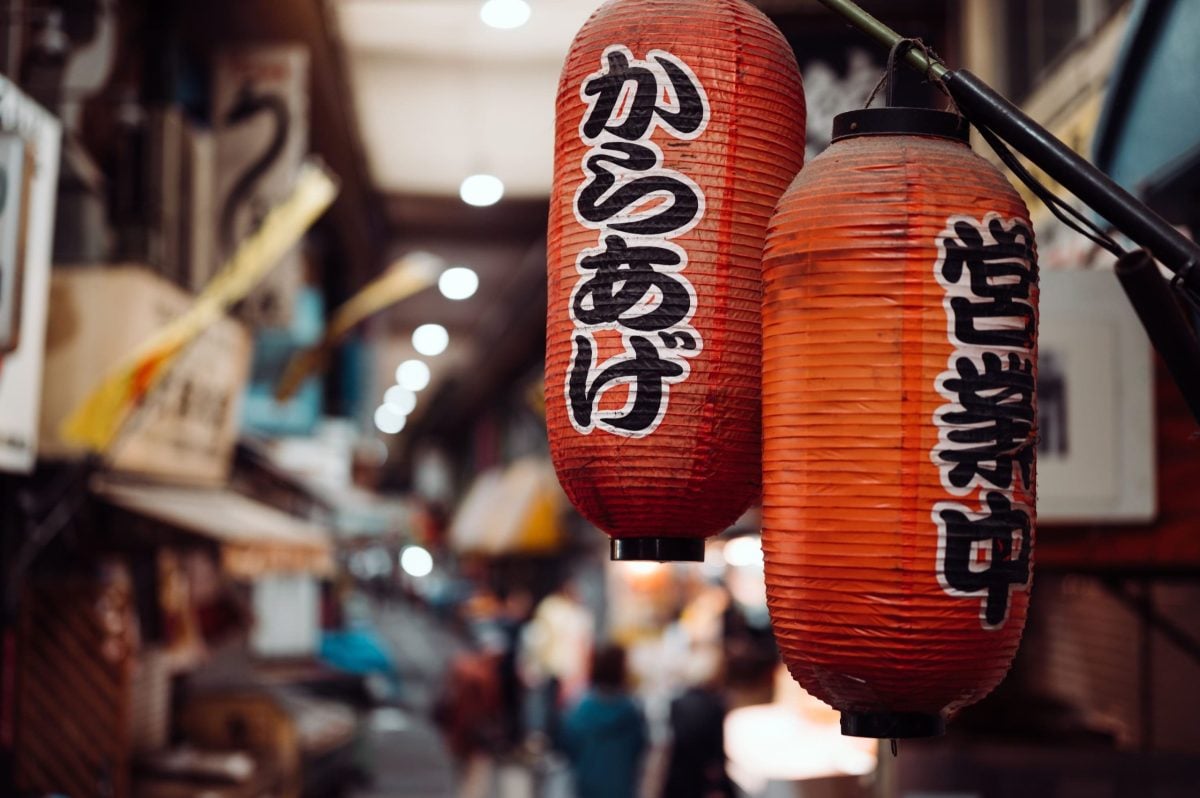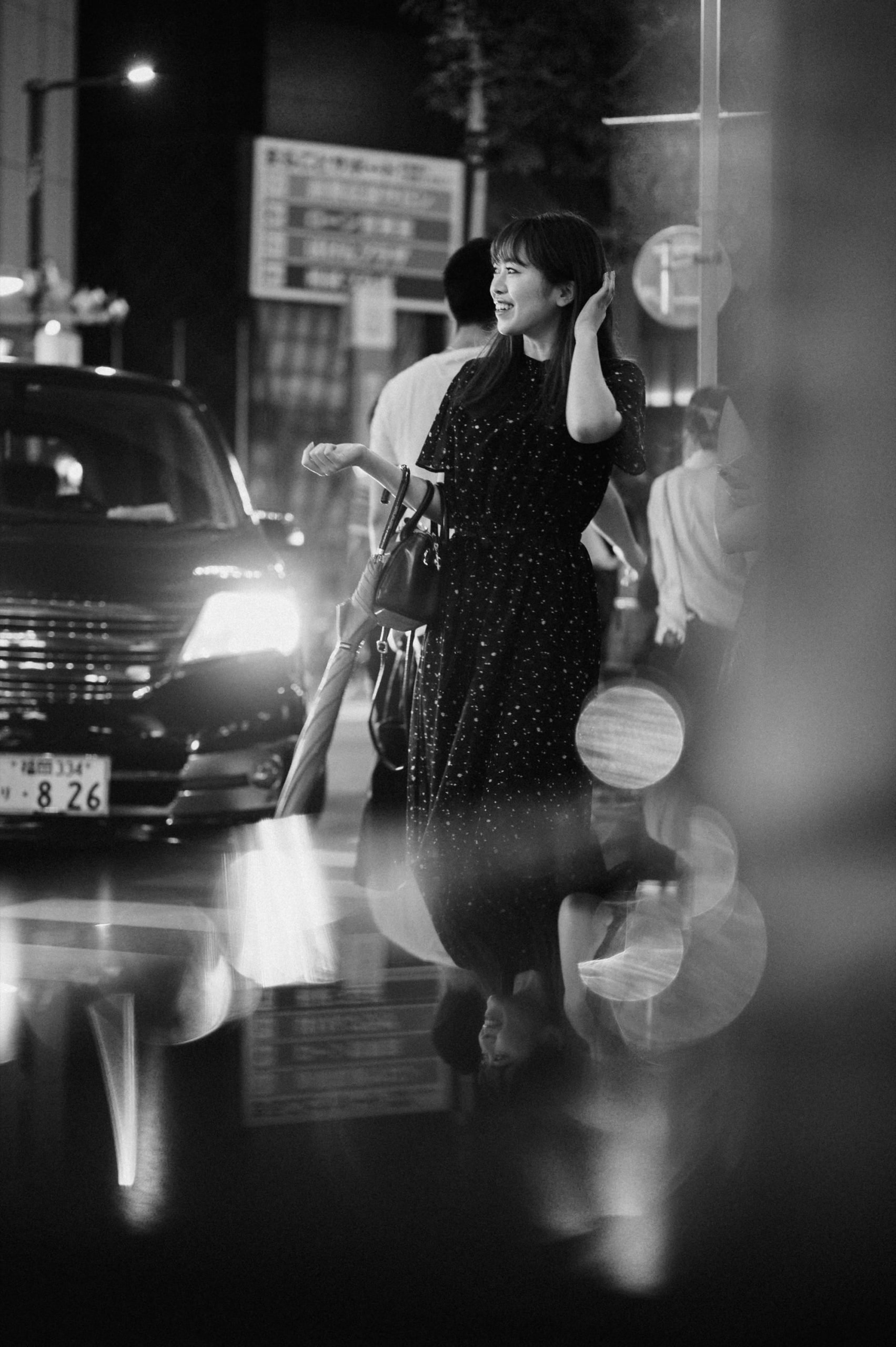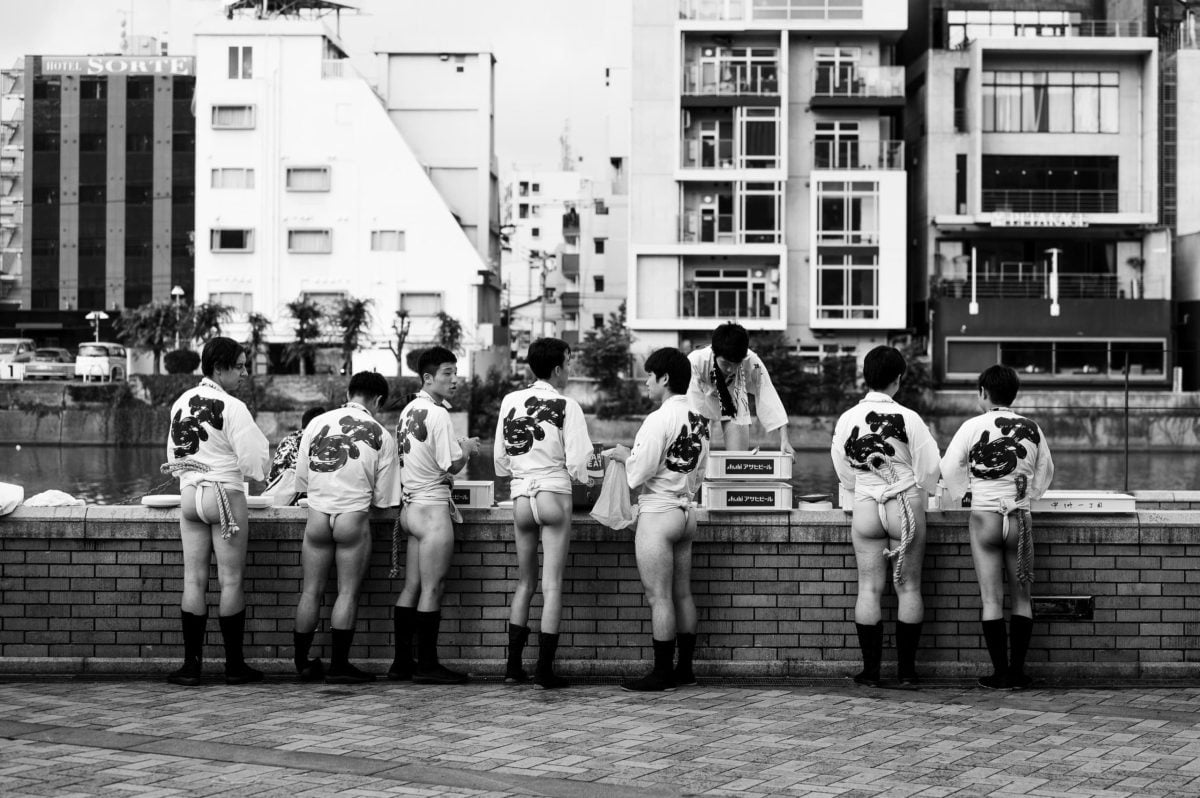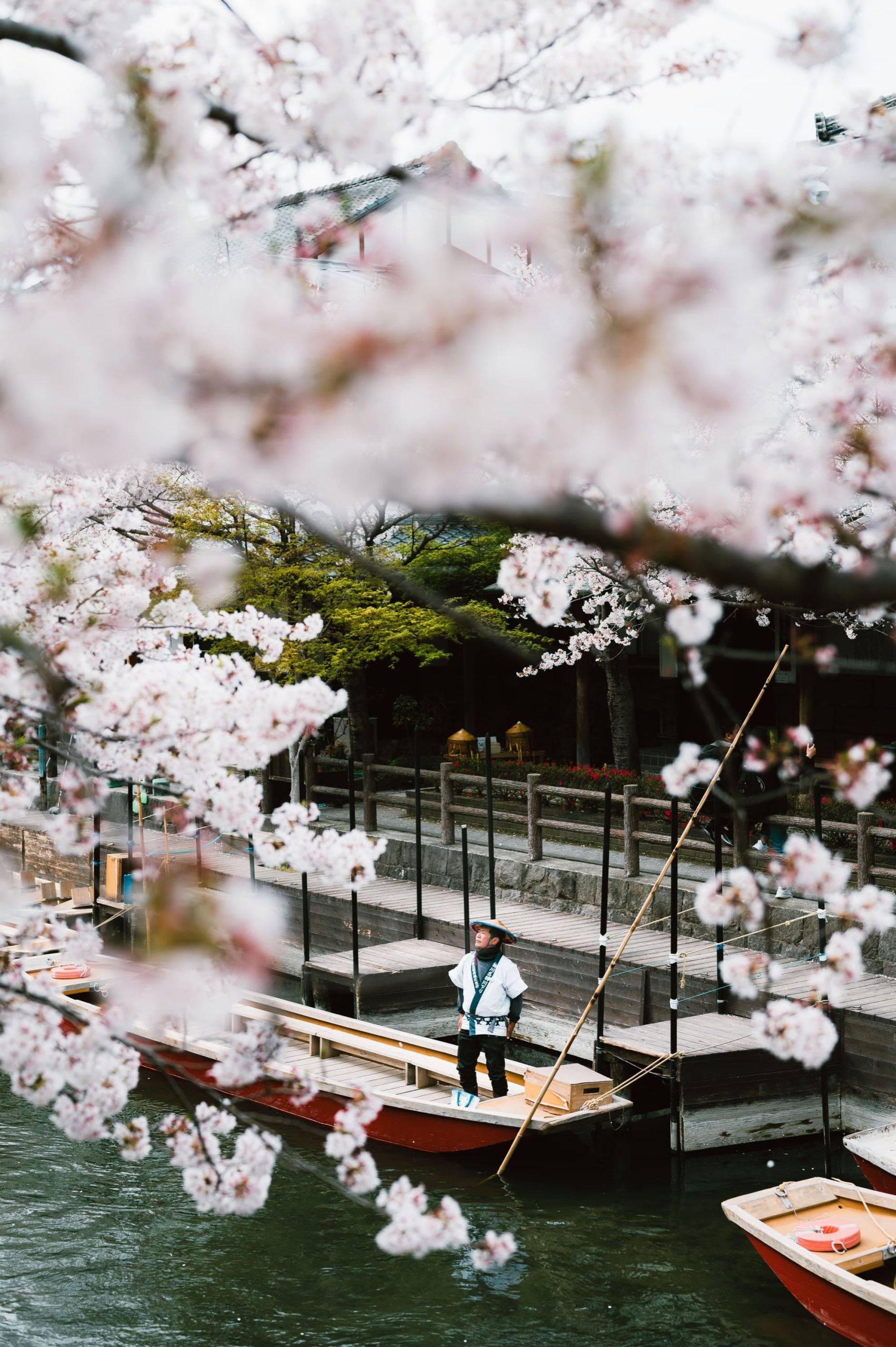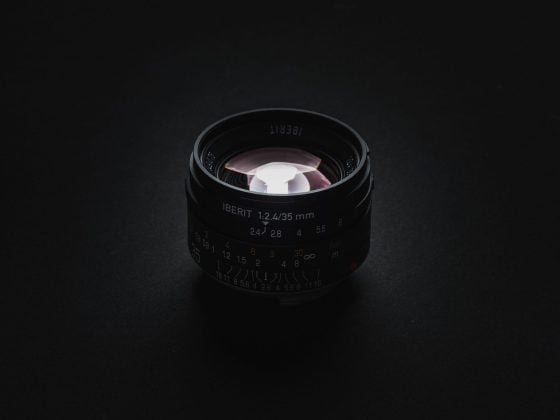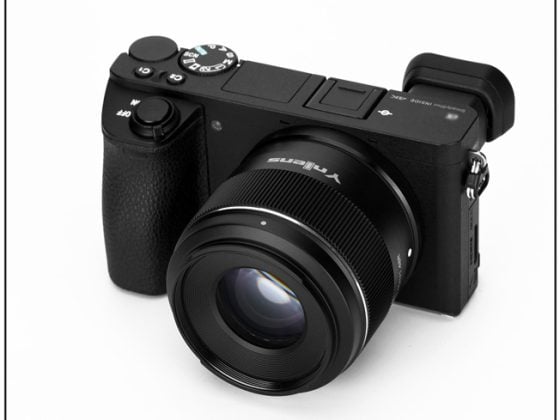The Nikon 50mm f1.8 S was one of Nikon’s first lenses for the Z mount system. It has been designed to cater to the hybrid shooter who wants a single prime lens that can do anything: video, landscape, wedding, portrait, or even street photography. While the f1.8 aperture isn’t exciting for many people, its versatility makes it a great place to start when building out a new kit.
The lens is weather-sealed and has a silent stepping motor focusing system, with very little focus on breathing. It’s very well-corrected, incredibly sharp, and very manageable in size and weight.
This is the best 50mm f1.8 lens ever made because it excels in any situation but is much less expensive than a lot of the competition.
Lens Specs
| Focal Length: 50mm Aperture: f1.8 – f16 Aperture Blade: 9 Rounded Optical Design: 12 elements in 9 groups Elements: 2 ED / 2 Aspherical Coatings: Nano Crystal & Super Integrated Coatings Autofocus: Stepping Motor Weather-Sealed: Yes Minimum Focus Distance: 1.31′ / 40 cm Filter Threads: 62mm Weight: 14.6 oz / 415 g |
Pros – Very sharp corner to corner, no focus breathing, great bokeh, great rendering, great color, great contrast, silent, smooth focusing, fast autofocus, weather-sealed, very little distortion, very little flaring, very little CA, nice uniform sun stars, great price, great build quality.
Cons – Minor vignetting at f1.8, higher element design, largest and heaviest f1.8 lens.
Nikon Z 50mm f1.8 S – Amazon / Adorama / BHphoto
Table Of Contents
Nikon Z 50mm f1.8 | First Impressions
The Nikon Z 50mm f1.8 S was the first lens I bought when I switched to the Nikon system, and it has become my most used lens by far. The lens doesn’t have any beautiful imperfections that jump out at you, but it’s a solid performer and can handle anything.
There are a few things that are pretty cool about this lens. First, with how it renders, it feels like it has a shallower depth of field than f1.8. It has a flat field curvature, so you get this 3D cutout effect where the center to corners is on a very even focal plane. A lot of our more classic 50mm lenses have shallower depth in the center, which gets deeper towards the edges.
So, although this is not a “character lens,” it does have its own unique rendering.
In terms of micro-contrast or 3D pop, it’s not very high and has a little bit of that Nikon glow. But it mostly sits right in the middle and is pretty average for a modern prime. Tonality is still good, but the highlights can get slightly flat in some situations.
Nikon Z 50mm f1.8 S Lens Review
With the Z mount, Nikon has approached modern lens design with a clean slate and a new philosophy – make great lenses that can be used in any situation. Video, portrait, landscape, or street. From what I can tell, they nailed it.
For me, f1.8 lenses are the perfect starting point for any type of photography. They’re good enough in low light and have a shallow enough depth of field portraits, but they’re never so shallow that it’s distracting.
The lack of great, somewhat affordable lenses like this Z 50mm f1.8 S was one of the big reasons I moved over to Fujifilm with APS-C a few years ago. For those f1.4 lenses that were smaller, lighter, and performed better than many of the full-frame f1.8 counterparts but were also significantly less expensive than the good Sony lenses.
But now, these Nikon f1.8 lenses give a better look than those f1.4 APS-C lenses (being full-frame and all), and the lenses are not much more expensive than what Fujifilm is currently offering – now I understand why Nikon built them. The high-quality f1.8 lenses are a perfect place to start when building out your kit. They can work in any situation with an amazing shallow depth of field, but not so stuffed with elements that you lose all the pop.
Where does this lens sit in the grand scheme of things?
In terms of optical performance, I really haven’t seen much else that can match it. Sure, there are the high element massive f1.4 GM lenses or Canon or Nikon lenses, but those are a different class and a different lens style. Just because a lens is faster doesn’t mean it’s automatically better. Usually, they’re actually worse unless we’re talking about f1.8 budget lenses. Personally, I don’t always want the look of crazy shallow depth that you get from f1.4 and f1.2 lenses, and it can often become a distraction instead of an improvement.
But Not All Is Perfect
There is one little thing I don’t love about this 50mm f1.8.
I really like the look of low-element lenses. 12 elements is a lot for an f1.8 lens, and sure, this is kind of the standard today for high-end lenses, but you will see a reduction of lens tonal pop or micro-contrast compared to a well-designed 9 or 7-element lens. Of course, with that comes sacrifices.
For their first round of S lenses, Nikon chose a lens that can be used in any situation, which I think makes sense.
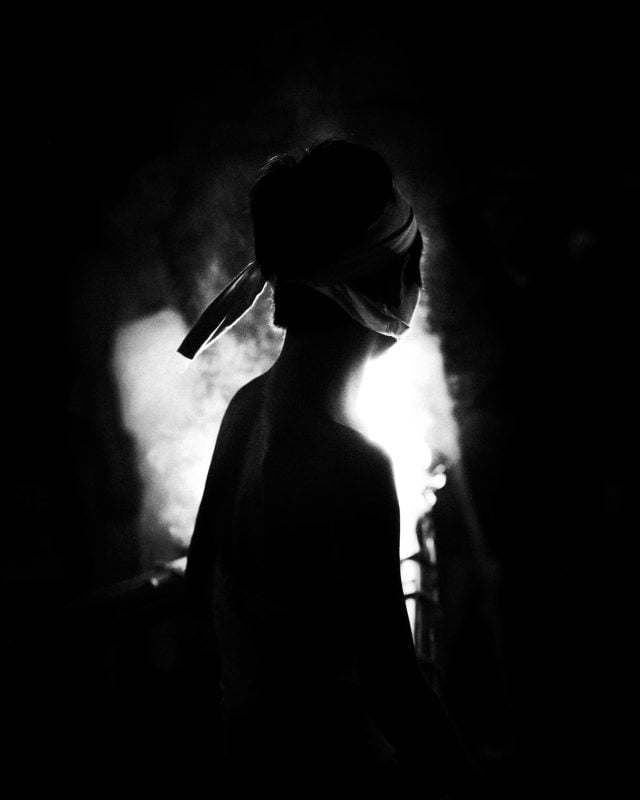
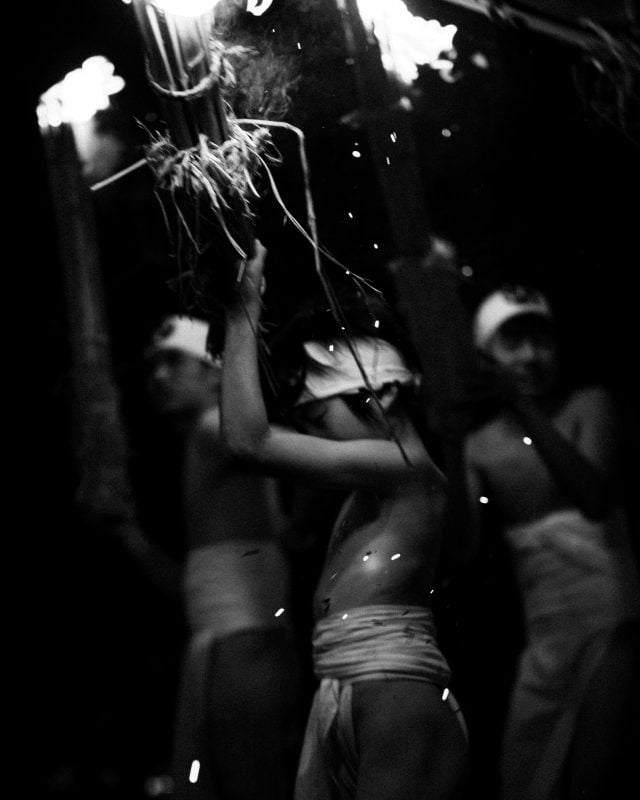
While I’m a nerd for micro-contrast, I often can forgive lenses that don’t excel at it as long as they do their job as beauty lenses, which this lens nails.
Images coming out of this lens are very magical: bokeh, sharpness, focus falloff, everything just clicks together in a way that really shows Nikon’s experience with optics, and I really like the even field curvature, so the out-of-focus background feels consistent across the frame.
The 50mm f1.8 S still has a nice prime pop from the great contrast and the f1.8 aperture, and it does produce a cool 3D cutout effect. However, compared to some of the lower-element primes that aren’t as corrected, this lens will not give you that tonal punch or that classic look.
Of course, some people don’t believe in such a thing as micro-contrast, and that’s fine; you’ll love this lens even more!
Build Quality
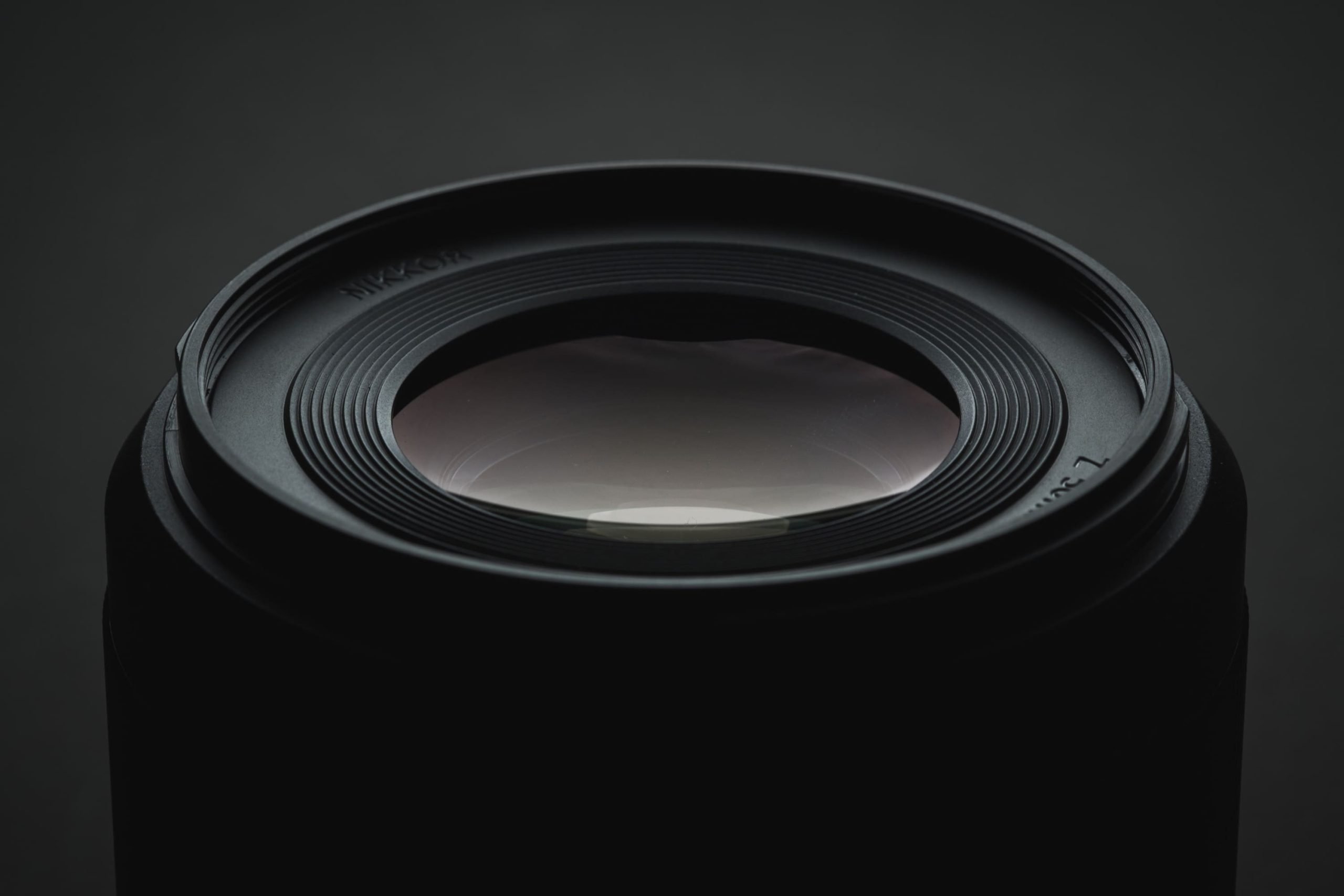
It always cracks me up when I see people say this lens is a cheap piece of plastic Walmart crap. It’s so unbelievably ridiculous and couldn’t be farther from the truth.
Yes, there is plastic on the lens, but where the lens connects to the body and the whole area around the mount is supported by metal, and obviously, it has a metal core. Plastic shielding is used near and around the focus ring, a common building technique. Go pick up a Sony GM lens or any Canon lens.
Plastic is used because it has different thermal properties and it handles impacts and scratches a little better than anodized metal, it will absorb some shock if hit or banged. Plastic will expand and contract slower when facing temperature shifts and, overall, doesn’t hold heat like metal does. Heat can destroy a lens by causing hazing or the thinning of grease or, in extreme conditions, even cracking elements, especially those made from fluorite crystal, which this lens does not have.
Besides one little strip at the base and front of the lens, which is plastic, the rest is made of aluminum. About 90% of this lens is metal. The focus ring is also aluminum.
Of all the 50mm f1.8 lenses out there, this lens is the biggest and heaviest, but not unmanageable. I’ve shot a ton of street photography with it, and if you take off the lens hood, the size ends up much more compact.
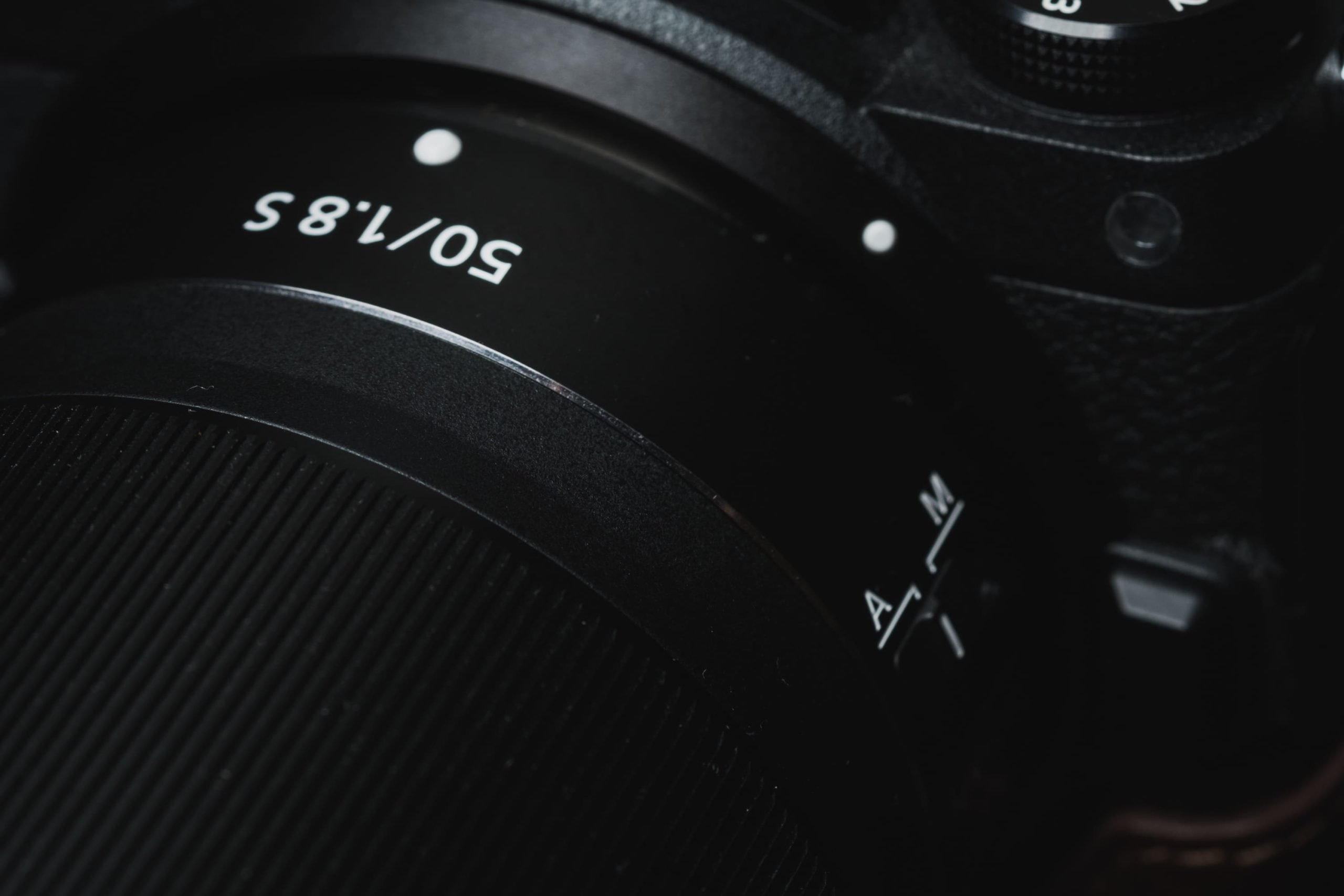
The lens has an AF / MF switch that you easily forget about. Sometimes, I hit that, and my lens is in manual focus mode, and I’m confused for a second and often forget that the switch is there.
The lens has an internal focus design, meaning no external moving parts exist.
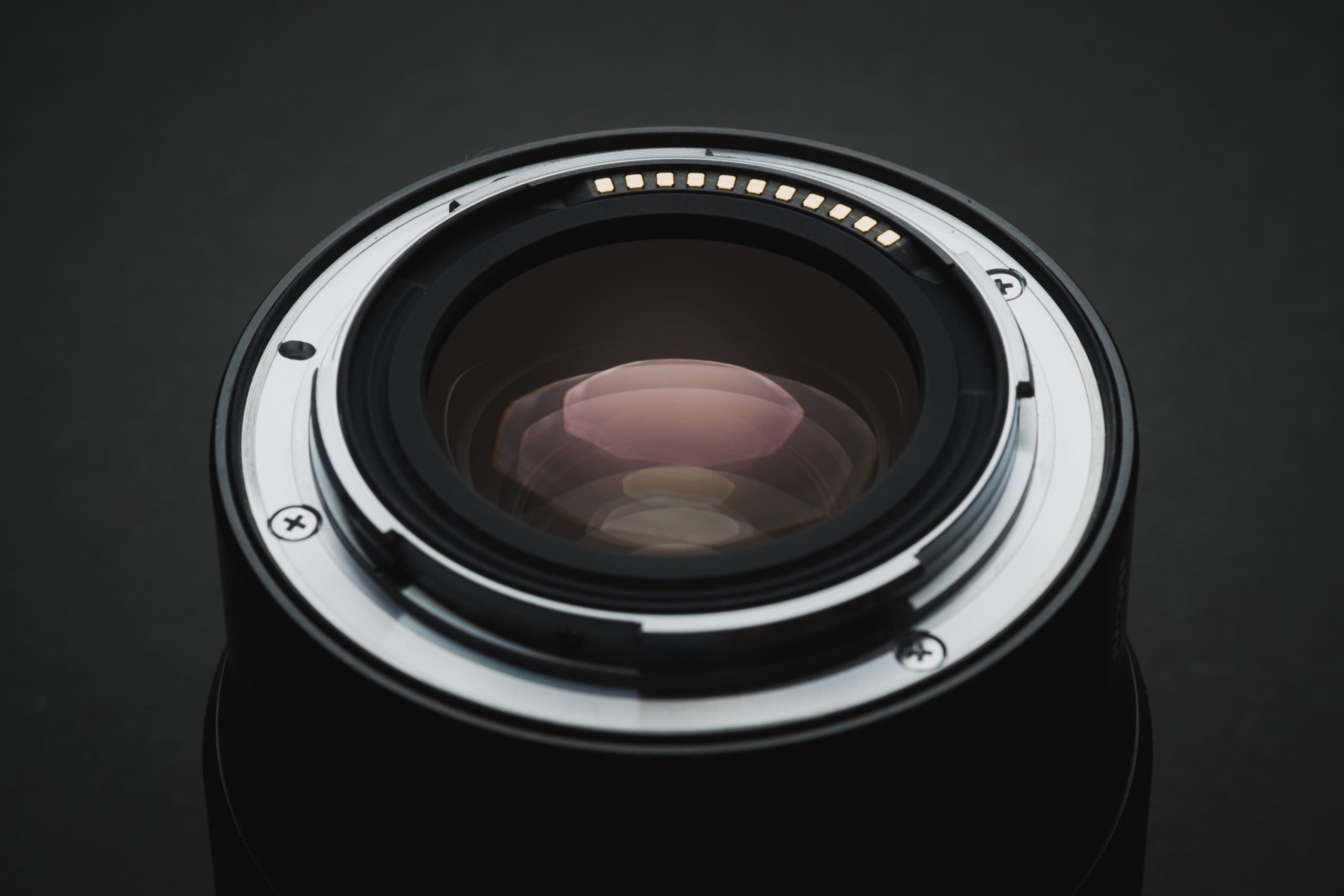
You can see from the photo above that Nikon is taking advantage of every millimeter of that short flange distance. Notice the rear elements actually protrude slightly past the actual mount. This is one of the few full-frame mirrorless primes I’ve seen do this. APS-C mirrorless cameras have been doing this for years now, like many of the Fujinon lenses, so It’s nice to see Nikon taking advantage of this here. I’m not sure if any Sony or Panasonic full-frame mirrorless lenses do this. Their mounts are very small.
Whether this makes the lens better is still up for debate, but it should make them at least more compact since you have more room to move the elements around behind the point of convergence.
Also, this lens does have a rear element focus design.
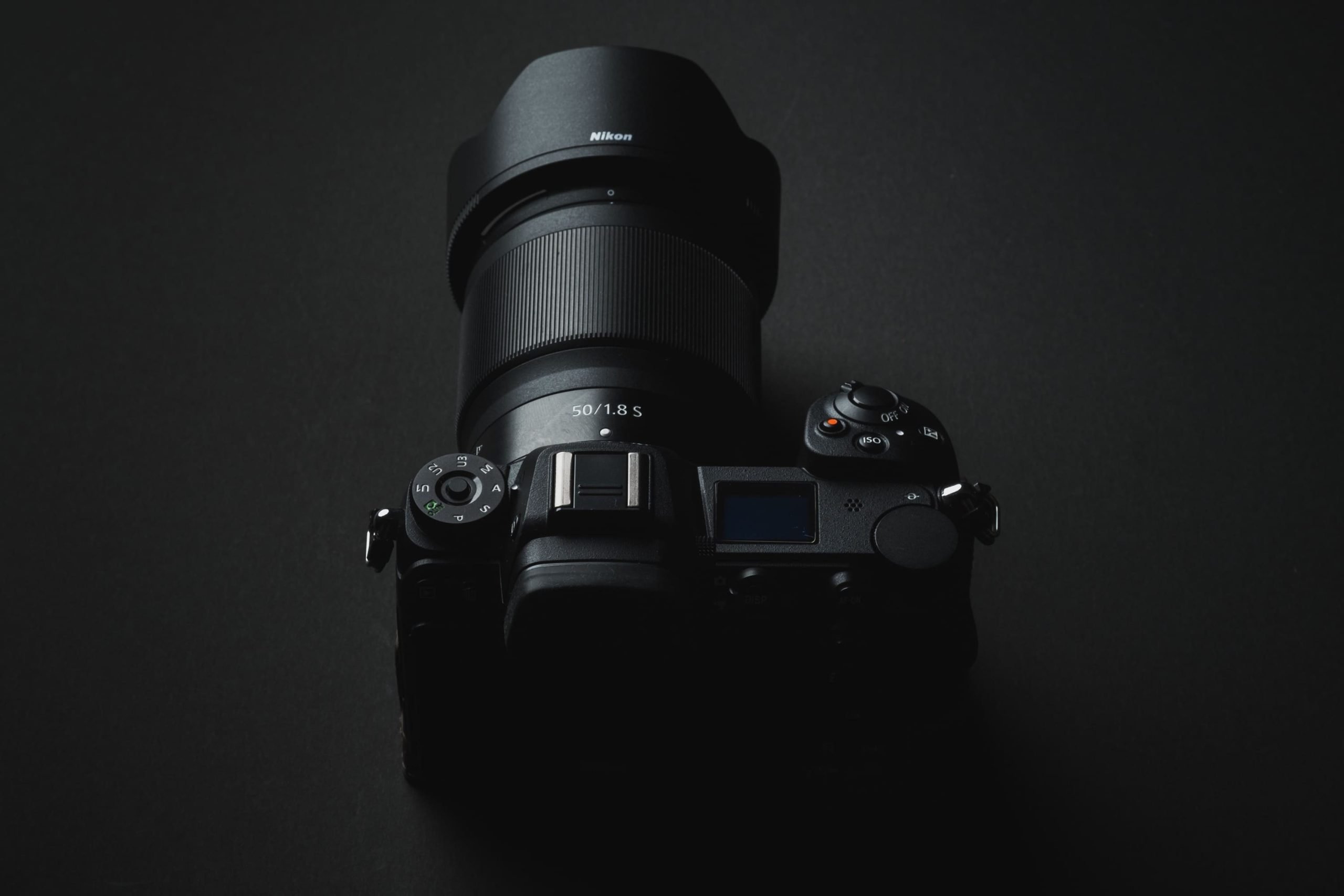
The lens hood is made of plastic but is solid. It doesn’t rattle around, and it makes a nice, firm click when mounted.
The lens caps are also very well designed. Both the front and rear stay firmly on the lens. This makes me happy since I can’t tell you how many lenses I have where the rear lens cap can shake off.
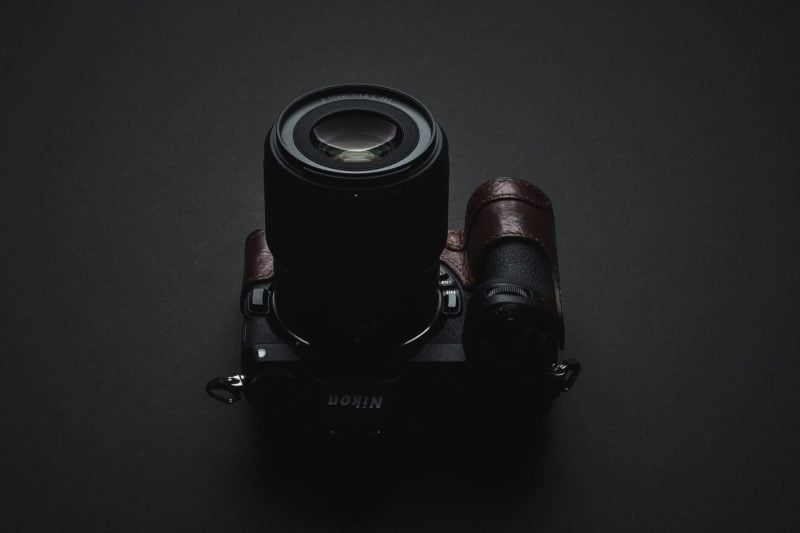
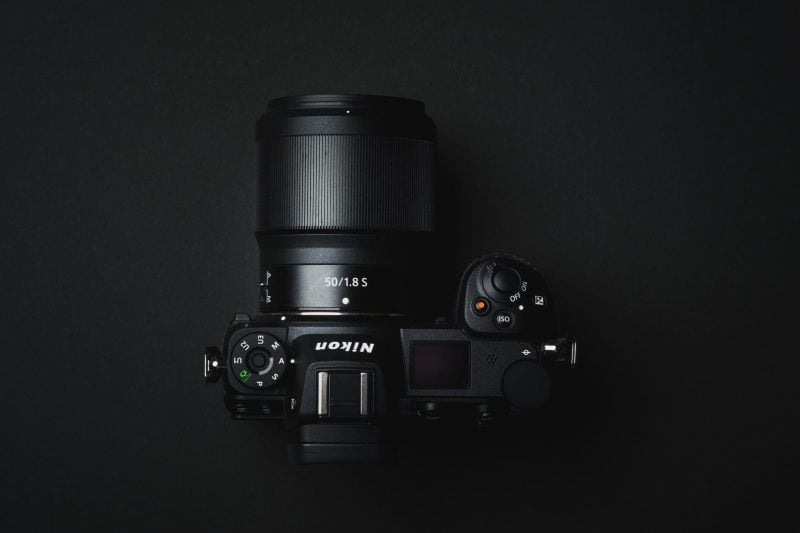
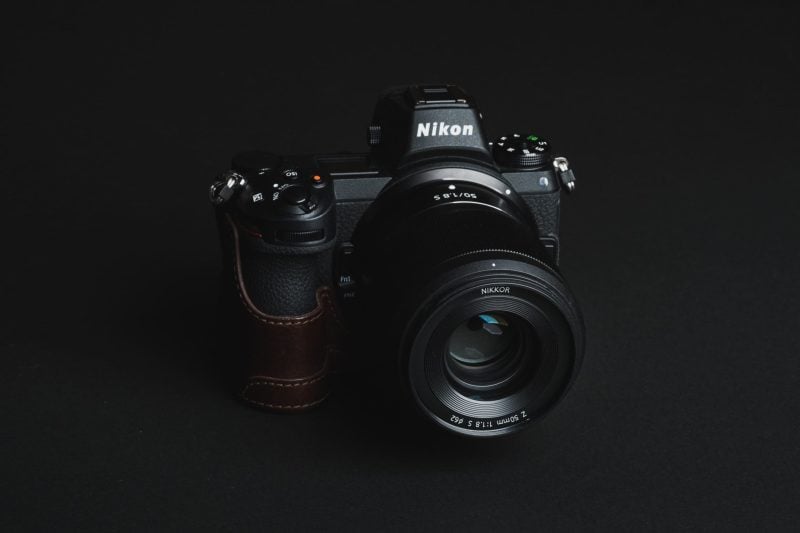
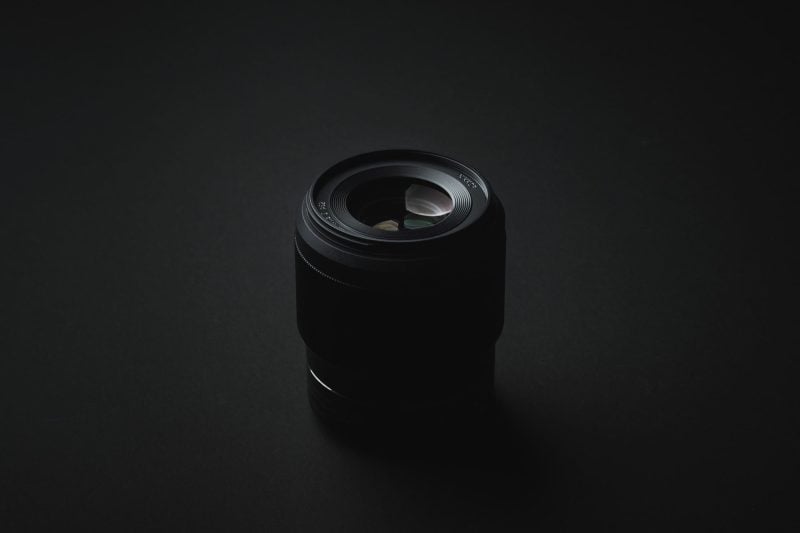
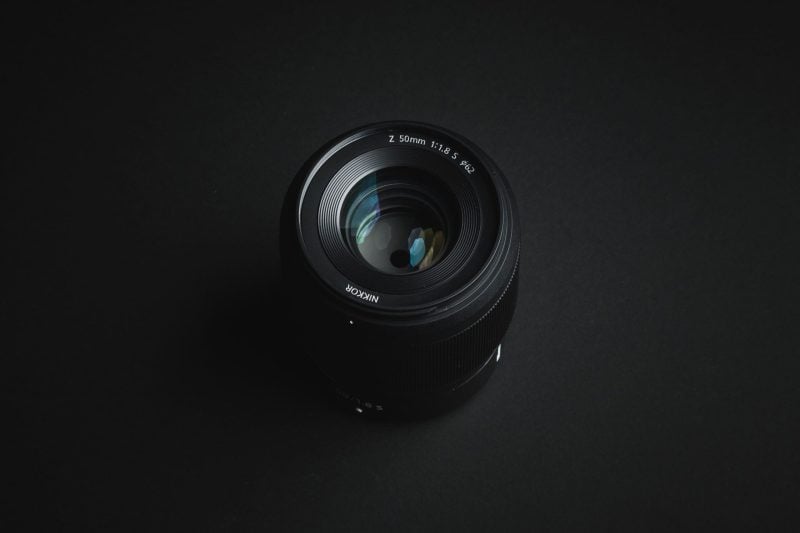
One of the things I love the most about the Nikon Z6 is the weather sealing, which you can totally depend on. I’ve taken my system out several times in some crazy conditions without any issues whatsoever.
I’ve shot in typhoons and in pouring rain during fire festivals where ash is everyone, and the lenses and camera had no issues later.
Technical Characteristics
On the technical side of things, this lens is incredible. It does everything you could want and need. Sharpness is insane. This lens really sets the bar on performance for future f1.8 lenses.
Sharpness
Sharpness or I should say detail, is very good on the Nikon 50mm f1.8. There is also very little loss of center sharpness when wide open.
Center Sharpness
Corner Sharpness
The corners look good for the most part. They’re not perfect, but they’re close. They clean up really well with smaller apertures.
I don’t focus on the corners of these charts, so I can see how the field curvature affects the image. When there is field curvature, it usually clears up by about f5.6 or f8. This lens doesn’t have an issue with field curvature.
Edge Sharpness
Edge sharpness is also very good.
Distortion
Very little distortion. This is after I removed the baked lens profile correction with Iridient Developer.
Vignetting
Vignetting is this lens’s biggest weakness, but it’s still not bad at all at f1.8. This is after I removed the baked lens profile correction with Iridient Developer.
Flaring
Flaring is very well controlled with this lens.
Sun stars look like this –
Chromatic Aberrations
Chromatic Aberrations are well controlled. Stress testing shows some longitudinal purple and green fringing.
Technical Overview Final Thoughts
I’m now seeing a trend with Nikon Z lenses, where the designers seem to be allowing a little more vignetting. They must think it’s better to balance the lens in other ways and allow for a little more vignetting. Cameras today have such a good dynamic range, so cleaning up vignetting with lens profiles is not an issue like it was years ago.
Maybe this is good or bad, but it seems like Nikon is allowing for a bit more of these easily fixable flaws with profile corrections or software in favor of correcting other issues or enhancing features that cannot easily be done in post.
The lens design is a little bit like rolling a character in D&D. You only get a limited number of attribute points that you can shift around to assemble the perfect build. Experience is everything, so allowing the lens to have more vignetting in favor of maybe corner sharpness would be like rolling a character with a little less Str in favor of Int. Then cleaning up vignetting with software would be like maybe getting a +2 Str helm later. – Yes, I’m a nerd.
Art & Character
Usually, when reviewing lower element lenses by Fujifilm, the art and character section goes a bit more into render depth, focus falloff, and micro-contrast.
While this lens has a really smooth focus falloff, micro-contrast and tonal depth are a bit weak for a prime.
It doesn’t really have that tonal pop look with great micro-contrast; you’ll never see that in a 12-element lens.
Tonally we’re seeing some slightly flatter highlights with his lens and slightly muddier shadows. So this gives you more of that glossy high-element prime look.
Just so you’re not confused, there is a very nice 3d cutout effect from how well the focus falls off with the nearly buttery-smooth background. But this is a little different from what you would classically call the Zeiss pop or 3d pop which comes from more tonal depth. So yes, there is a very good 3d look, but it lacks tonal pop. I hope that makes sense.
One look is not necessarily better than the other, and it really depends on what you’re going for. I typically like lenses that have more micro-contrast and 3D pop with the way they render tonally, but then again, this is my most used lens, even though I have a lot of classic lenses.


You have to pick your battles.
Too few elements, and you’ll end up with the Sony 50mm f1.8, which has a very classic rendering but a lot of CA and other issues. But then, when there are too many elements, you’ll be in Sigma territory or Nikon Zoom lens territory with flat glowing highlights. 11 / 12 is very acceptable, especially if the focus is video, landscape, or portraits.
The trade-off overall final picture of the Nikon 50mm f1.8 is quite nice: a very rich and buttery smooth bokeh. It has fantastic subject separation, yet it still holds the image together very well, even at f1.8.
The highlights are a little flat, and it does have a little bit of that Nikon glow, but overall, it’s a very pretty image.
Many lenses, especially classic lenses, can also perform poorly when shooting at their fastest apertures at far distances. Bokeh usually gets very busy or kind of nasty-looking with a lot of spherical aberrations. This lens does not. It’s very reliable in every situation. It even has a nice minimum focus distance of 1.31′. So that’s another very positive characteristic to be aware of.
Bokeh
Many of the samples in this review are shot at f1.8, but in this section, I wanted to show a little bit more of the characteristics you may not see in just casual shots. I found a few situations that would usually bring out the worst in a lens so you could see the worst-case scenario.
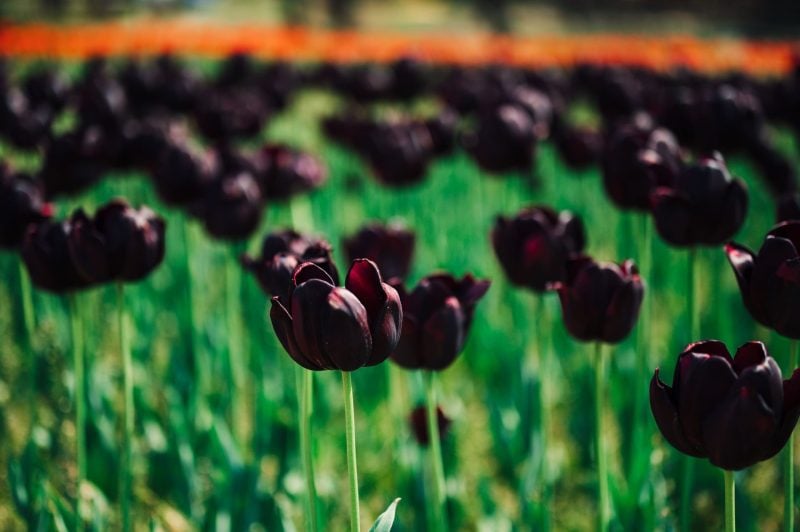






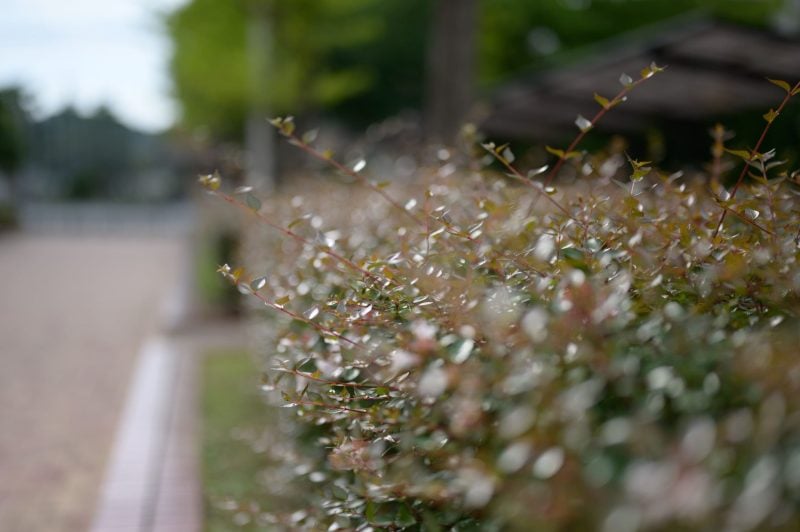
Bokeh Balls
Really nice bokeh balls and some cat-eye along the extreme edges. No onion rings, no soap bubbles.
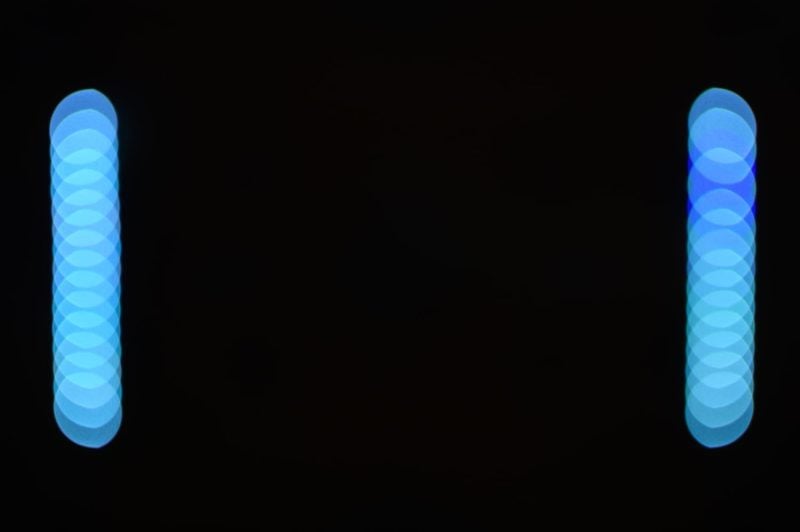
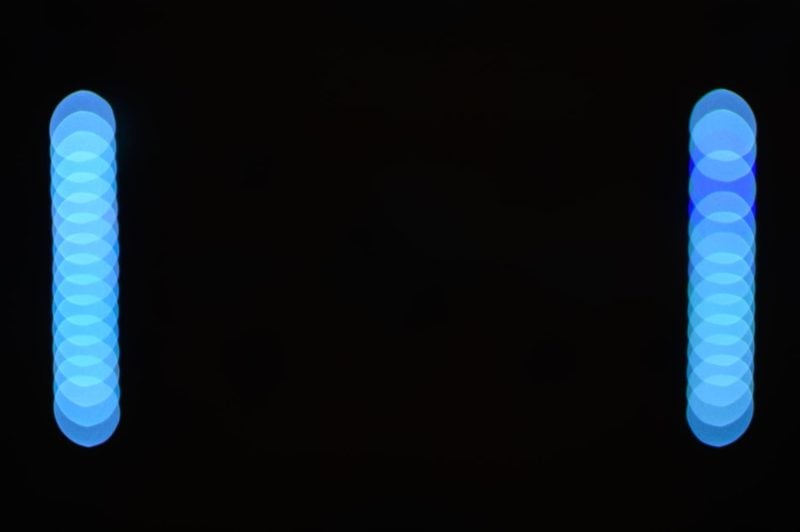
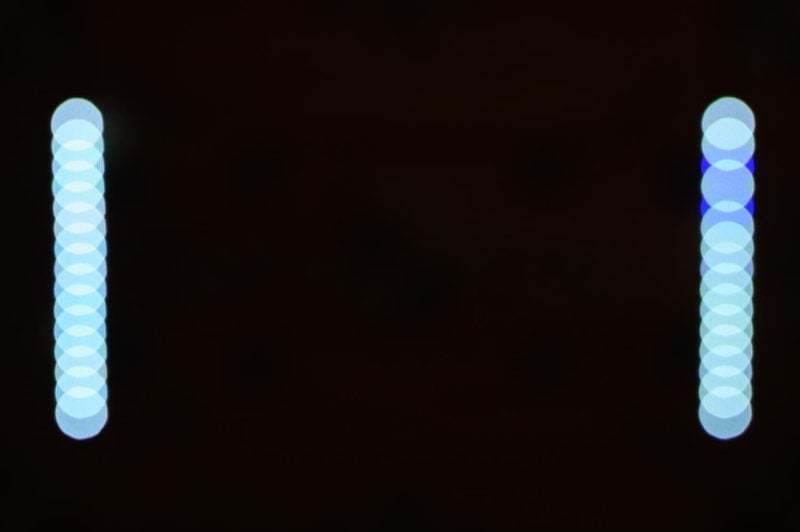
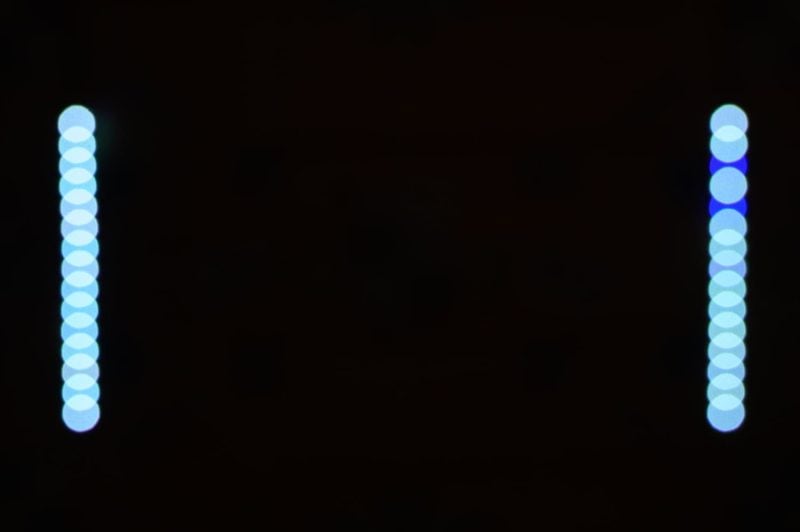
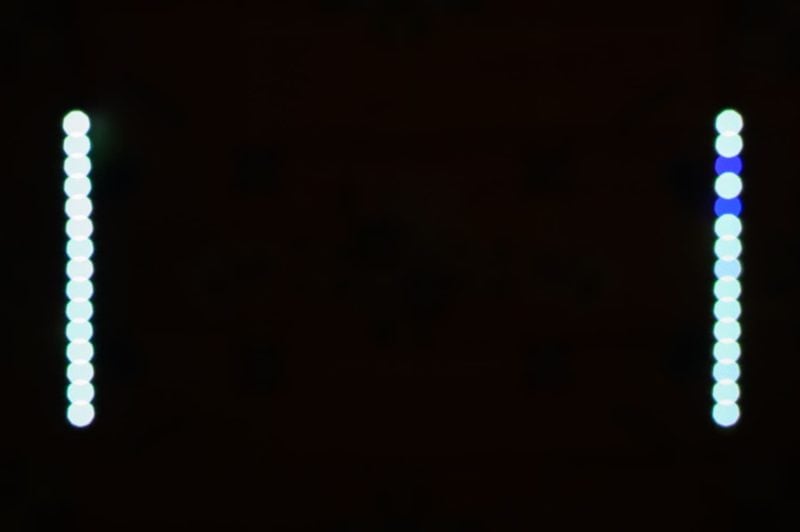
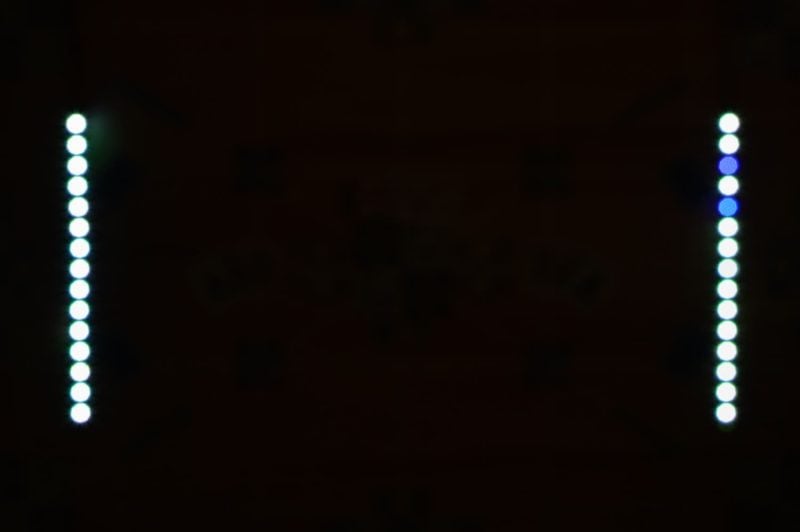
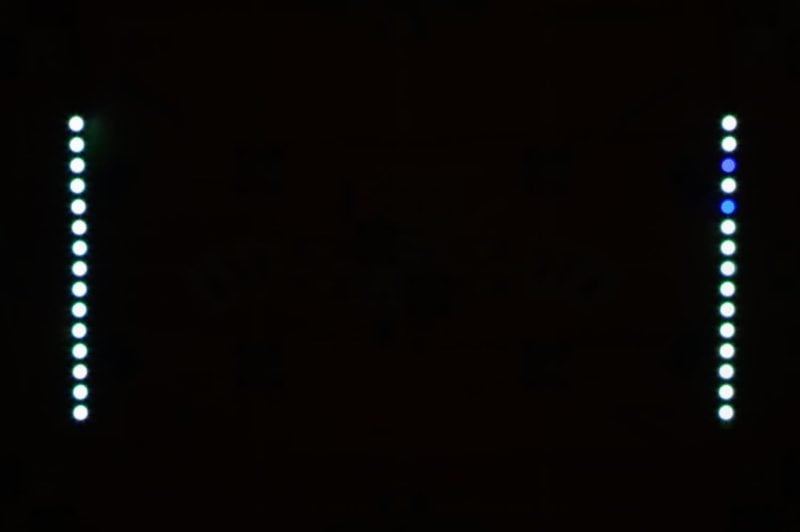
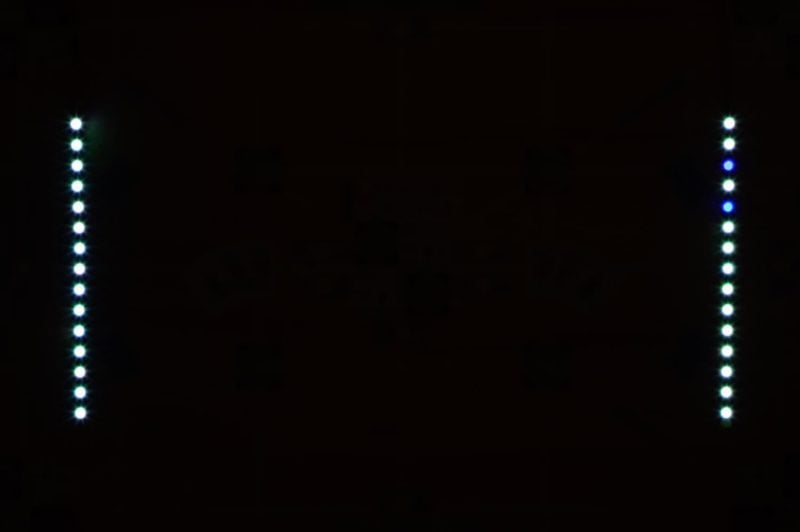
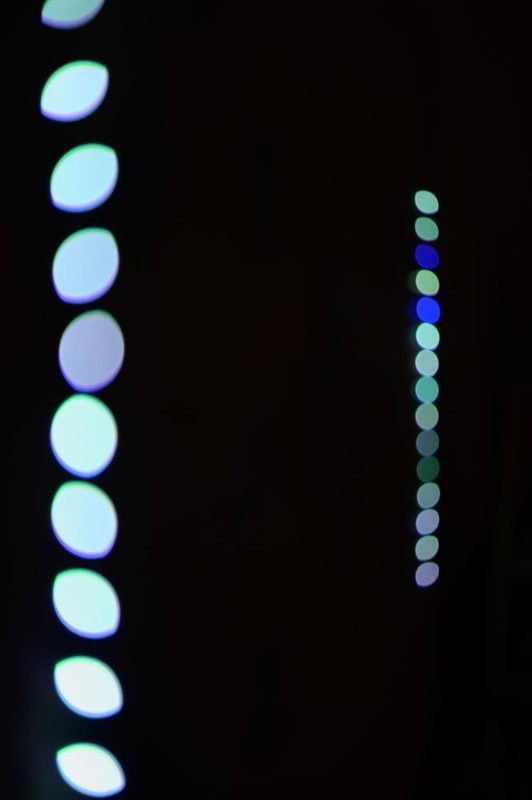
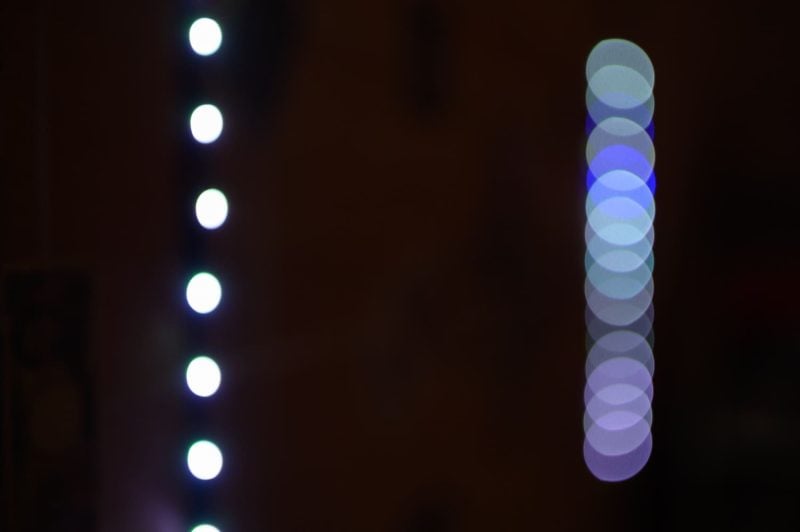
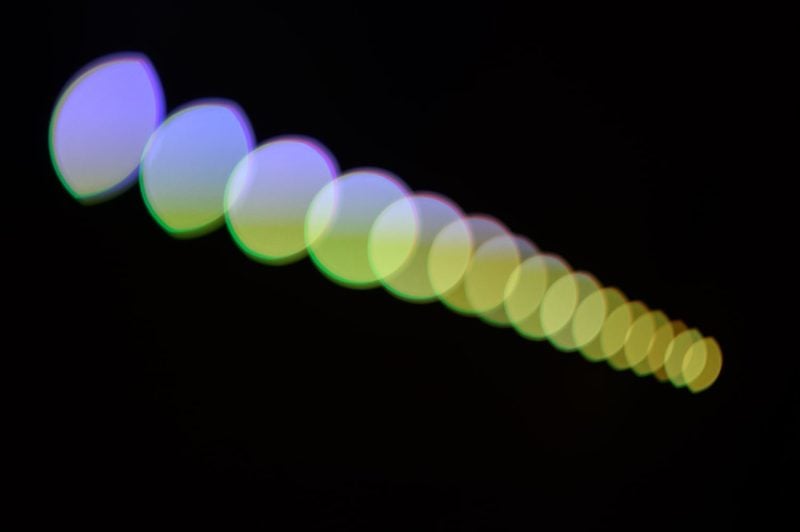
Color Rendering
Creating straight-out-of-camera raw files for Nikon is tough since their profiles carry over into Lightroom. And I’m always shooting with different profiles, so there is no real signature ‘straight-out-of-camera look.’
In these samples, I switched everything to the Adobe Color profile to match my Sony and Fujifilm reviews.
SOOC Samples – Adobe Color
If you’re unfamiliar with Nikon, this should give you a good idea of what Nikon RAW colors look like. Compared to Sony or Fujifilm, Nikon’s colors feel slightly more organic, but it doesn’t push them quite as hard as Canon.





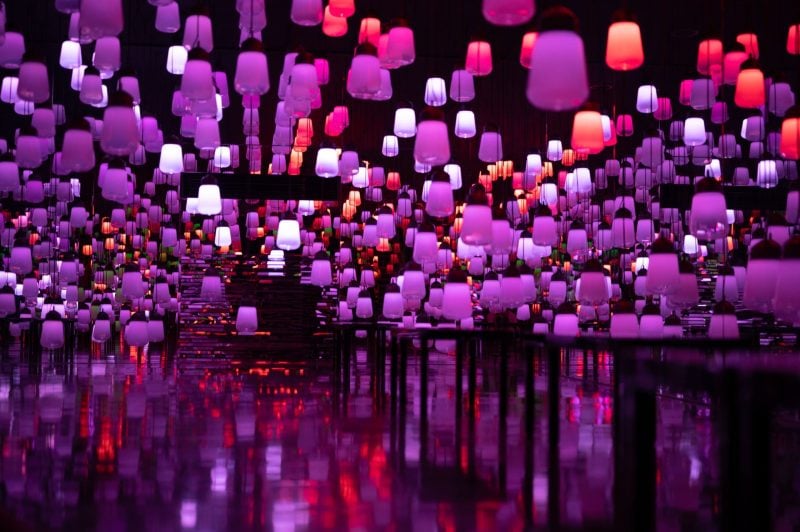
Contrast & Micro Contrast
As mentioned, this lens isn’t a micro-contrast or tonal pop beast, but the contrast is still very good. Because of the f1.8 aperture, you get a nice field depth that shows great foreground-to-background separation.
Here are a few B&W samples.
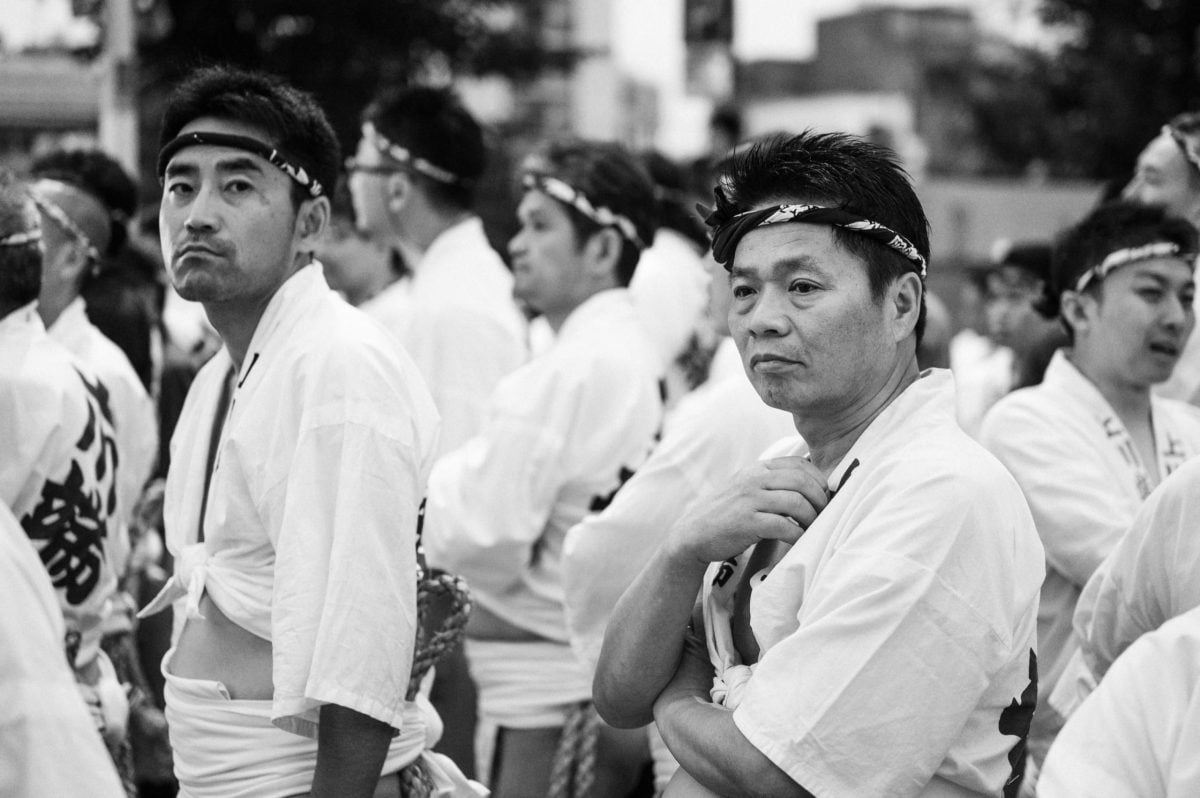
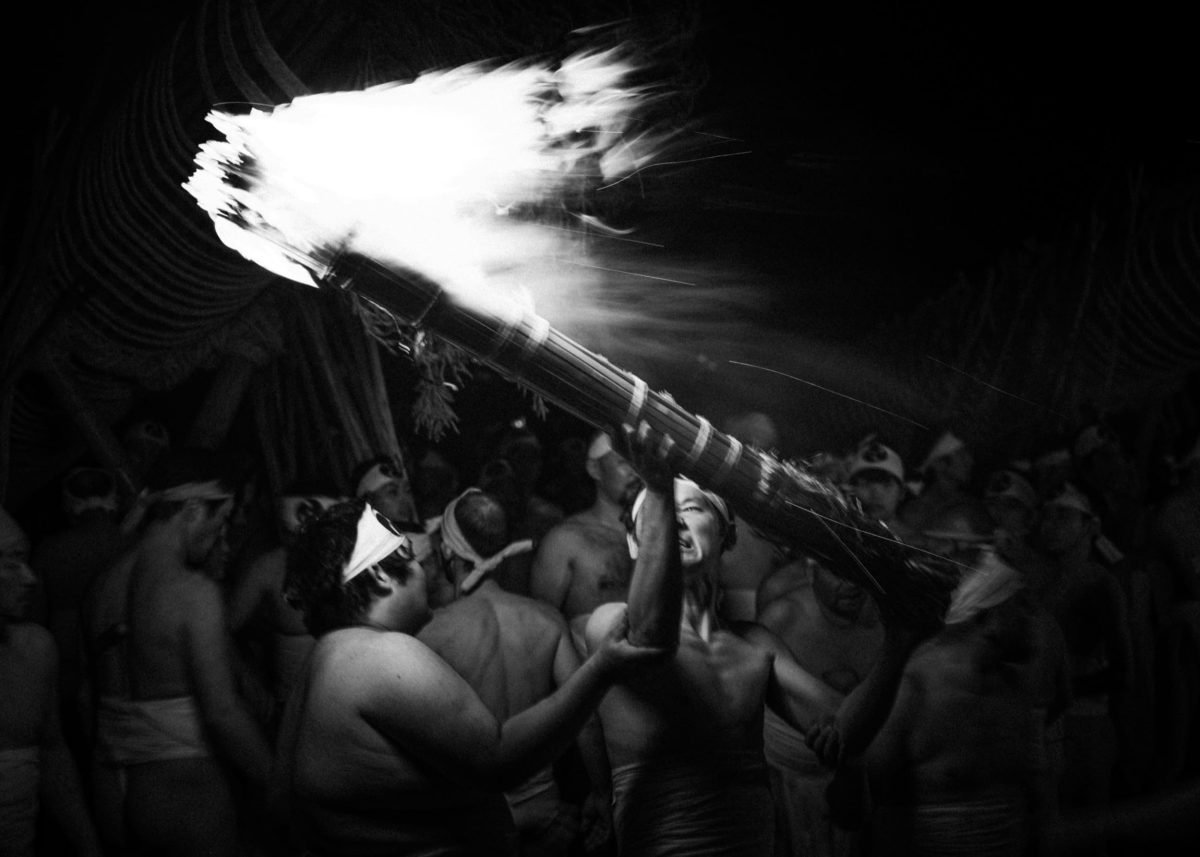
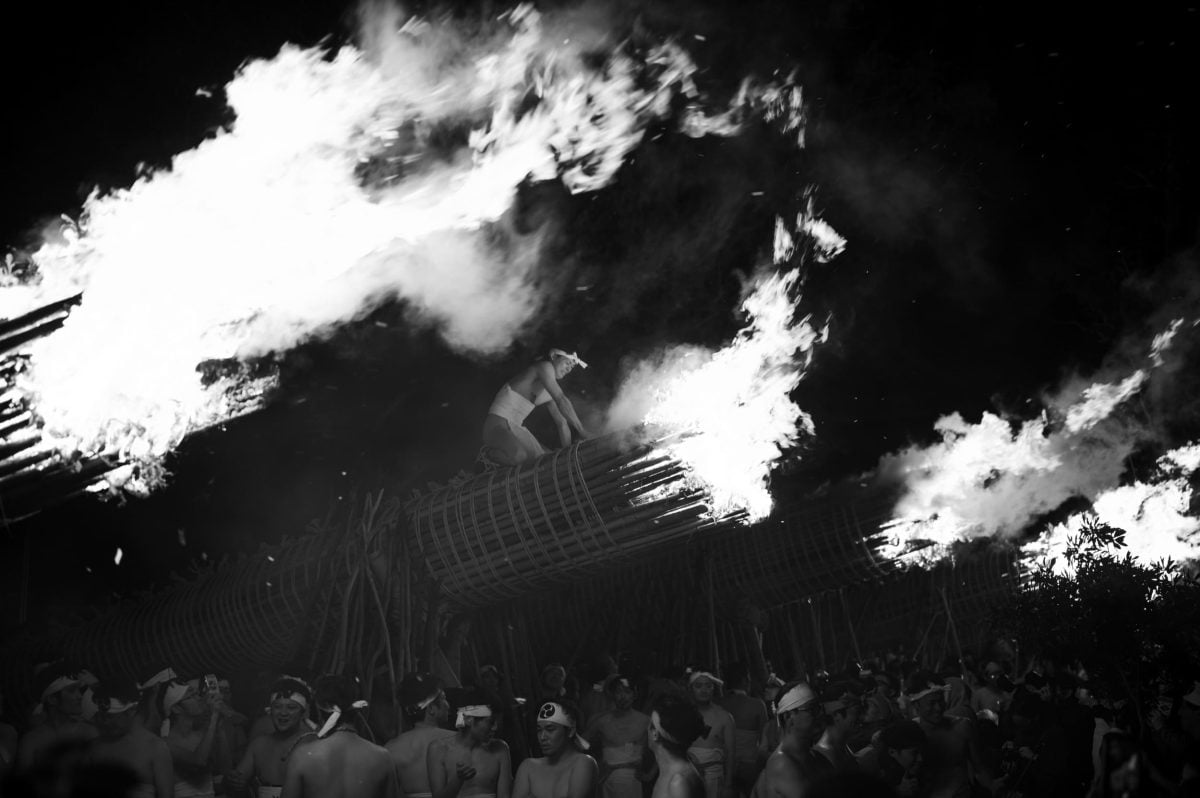
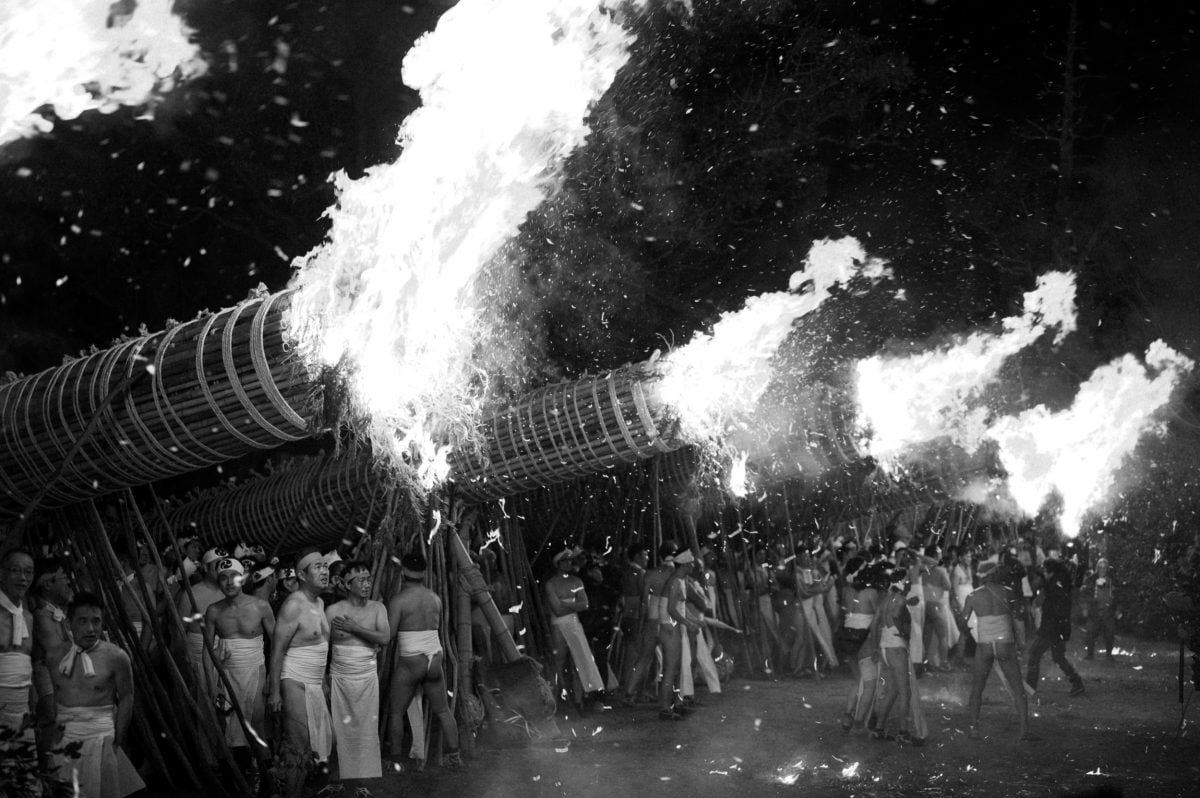
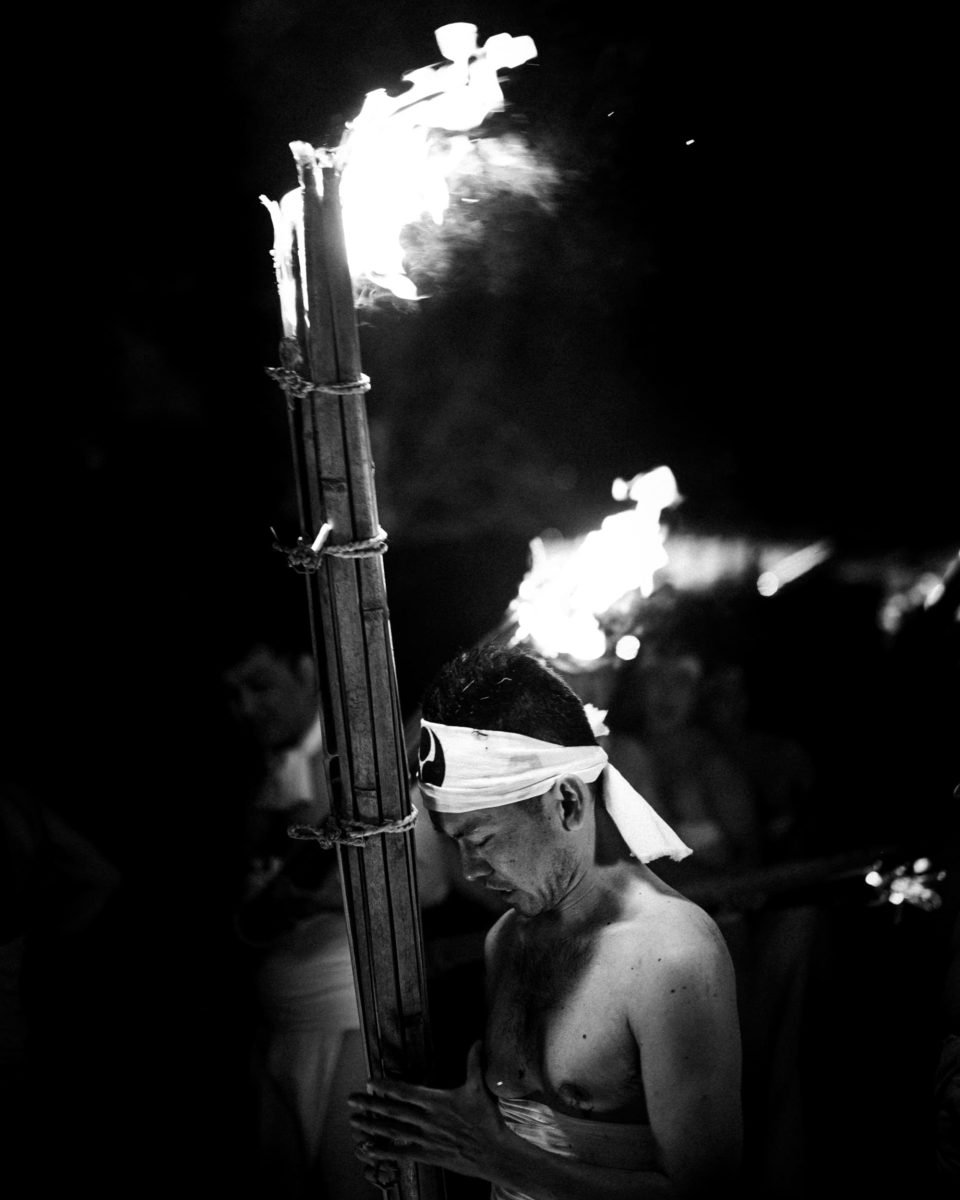
Nikon 50mm f1.8 Review – Bottom Line
The Nikon 50mm f1.8 S has just blown me away, and I’m a little shocked about how many people have been overlooking the Nikon mirrorless system. Everyone always used to preach that photography was all about the lenses, but lately, it’s all about which camera’s eye detection autofocus is 1.2% better, which camera has the most card slots, or, even better, how many megapixels.
So, final thoughts: I would say this lens is godly, a gem, a masterpiece. It’s amazing, and I never say that in my lens reviews! It really can do anything. It’s my most used lens and I love it.
I’ve also reviewed the Nikon Z 80mm f1.8, which is incredibly fun but not quite as perfect as this one.
Nikon Z 50mm f1.8 S – Amazon / Adorama / BHphoto
Similar Articles
Complete List Of Nikon Z Mount Lenses
Nikon Z 50mm f1.8 S Sample Photos
For this NIKKOR Z 50mm f1.8 S lens review, I shot all the sample photos with the Nikon Z6 or Z8 and colored everything in Lightroom using my custom-made film presets.
All images are uploaded at half-res, and some are shamelessly cropped. I’ve also been using this lens a bit more with various diffusion filters and Lens prisms.

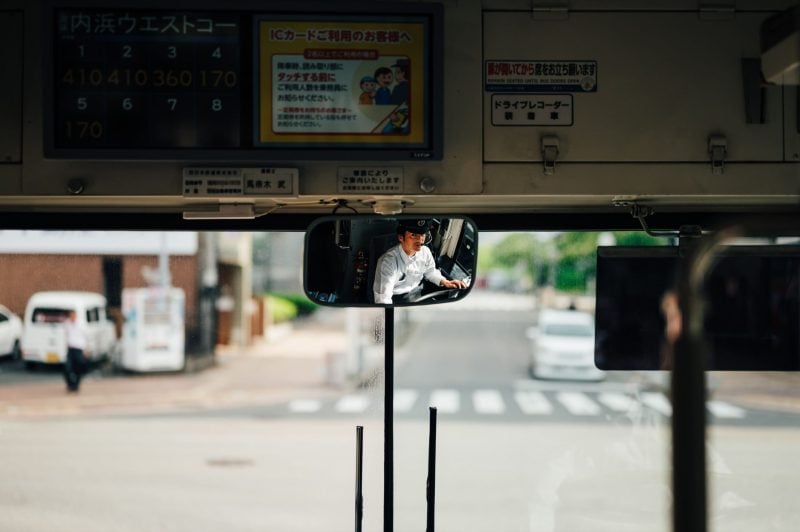
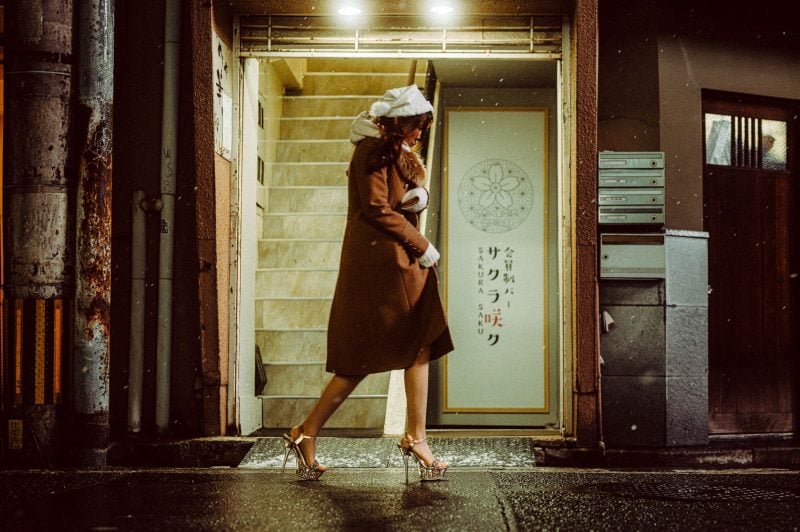
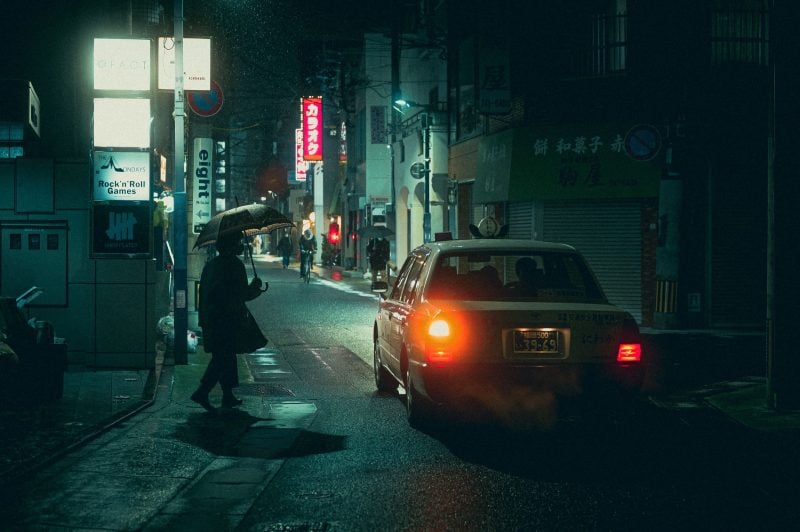
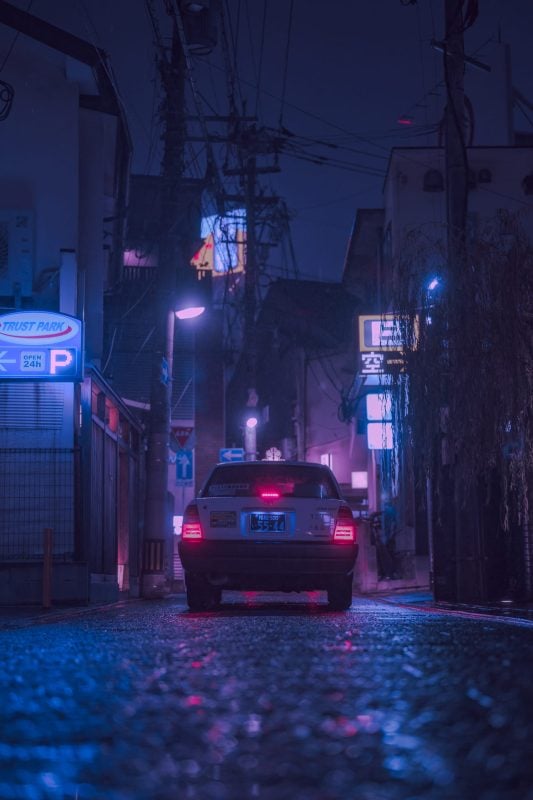








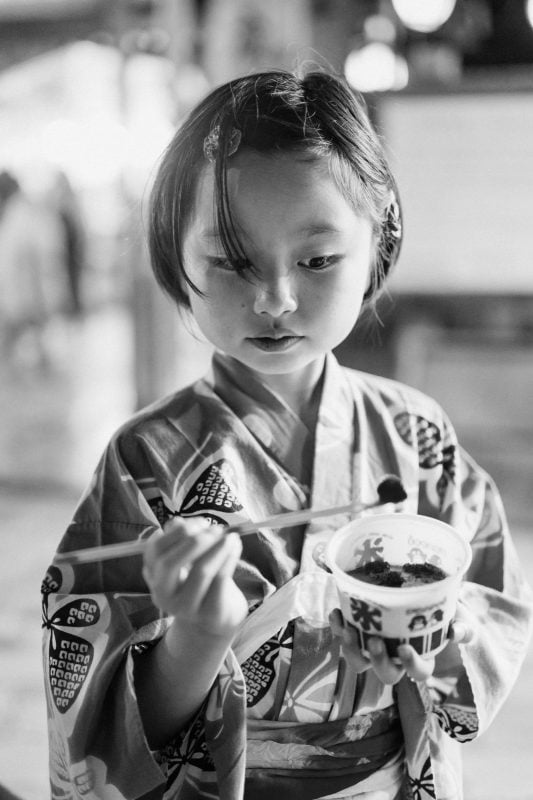


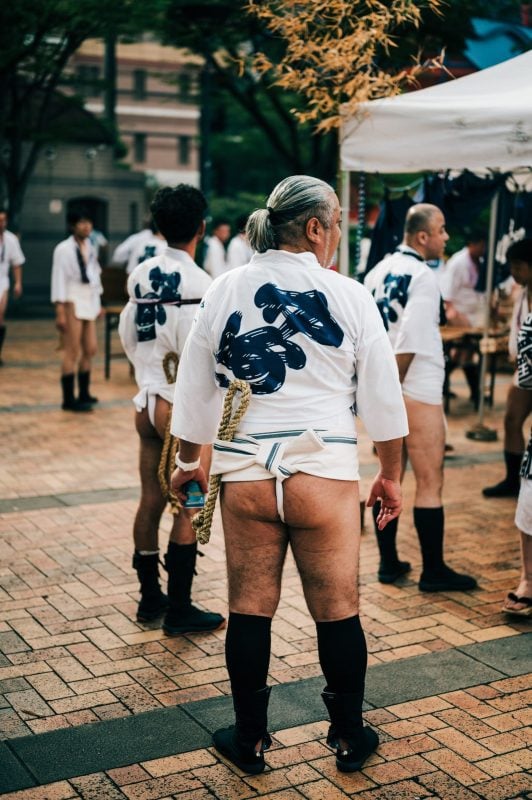

| **This website contains affiliate links. We will earn a small commission on purchases made through these links. Some of the links used in these articles will direct you to Amazon. As an Amazon Associate, I earn from qualifying purchases. |

